37 Creative Herb Garden Ideas to Transform Your Indoor and Outdoor Spaces
You don’t need acres of land to create a stunning herb garden that brings fresh flavors and aromatic scents into your daily life.
Whether you’re working with a tiny apartment windowsill or a sprawling backyard, these clever herb garden ideas will help you maximize every inch of space.
From repurposed containers to vertical growing systems, you’ll discover beautiful ways to cultivate your own fresh herbs while adding natural charm to your home’s decor.
01. Transform Your Side Yard Into a Fragrant Haven

Credit: @ladylandscape / Instagram
Your side yard is the perfect spot to create a dedicated herb sanctuary that attracts beneficial pollinators while keeping them at a comfortable distance from your main living areas.
You’ll love how this strategic placement allows flowering herbs like lavender and oregano to thrive while creating a natural buffer zone that enhances your home’s landscaping appeal.
02. Bring Aromatic Herbs Into Your Living Spaces
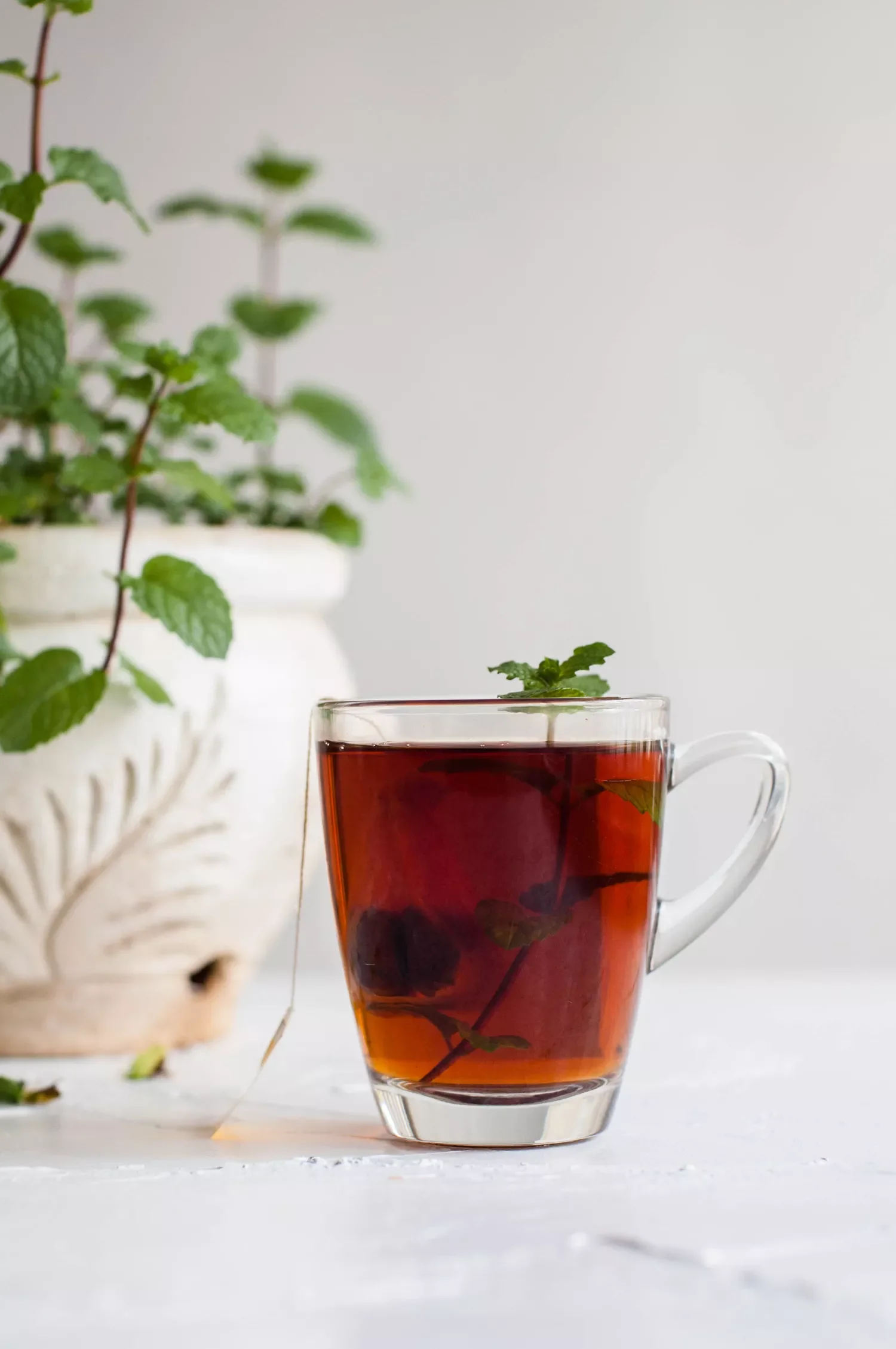
Credit: Karl Tapales / Getty Images
You can fill your home with delightful natural fragrances by growing highly aromatic herbs like spearmint indoors where their scents can be fully appreciated.
Simply brushing against the leaves releases refreshing minty aromas throughout your space, and you’ll always have fresh herbs ready for teas, cocktails, or cooking adventures.
03. Design a Charming Windowsill Kitchen Garden
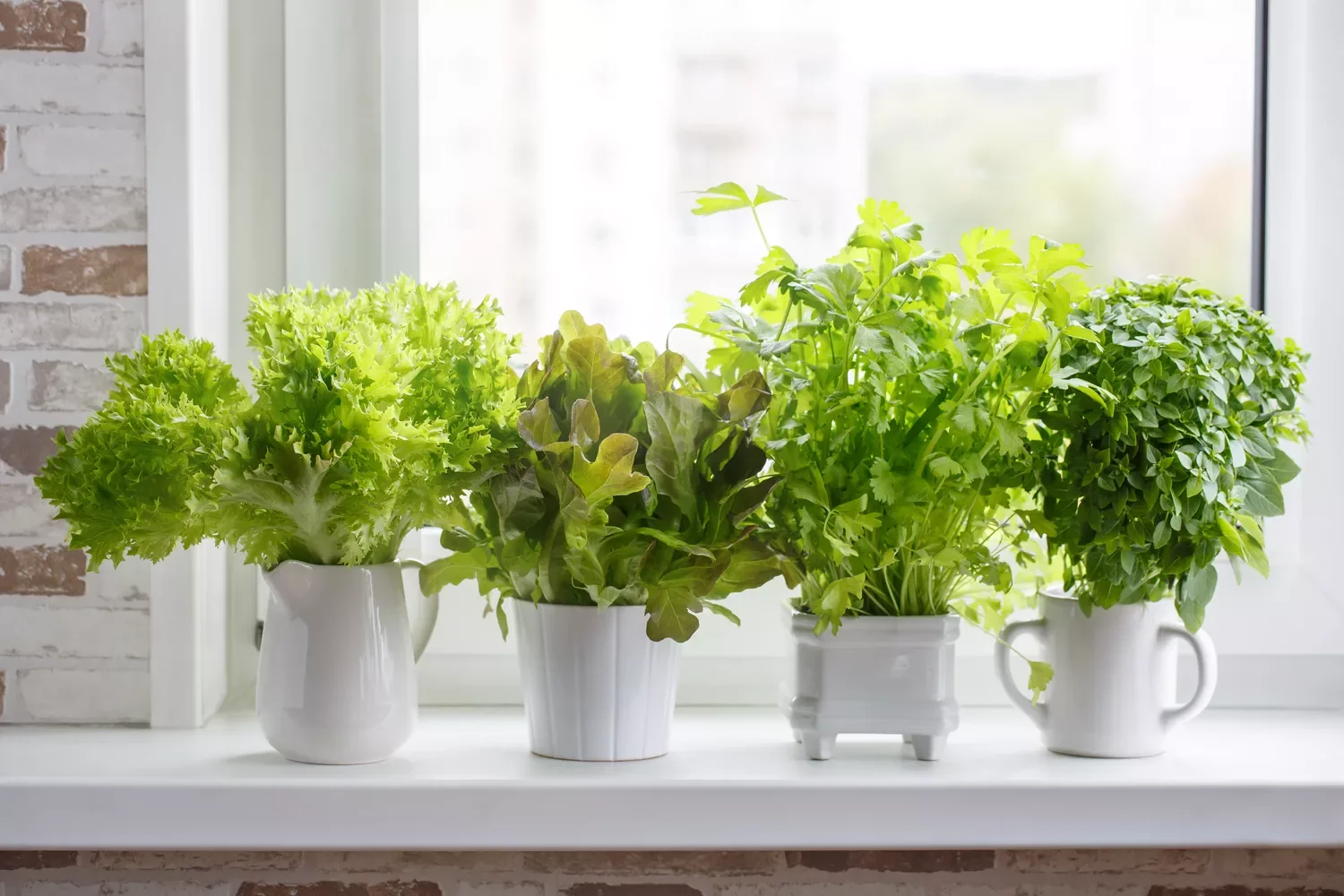
Credit: Geshas / Getty Images
Your sunny kitchen window becomes an adorable herb garden when you line it with small decorative pots filled with basil, thyme, and other culinary favorites.
Regular trimming keeps your herbs healthy within their containers while ensuring you always have fresh ingredients within arm’s reach while cooking your favorite meals.
04. Construct an Eye-Catching Vertical Growing System
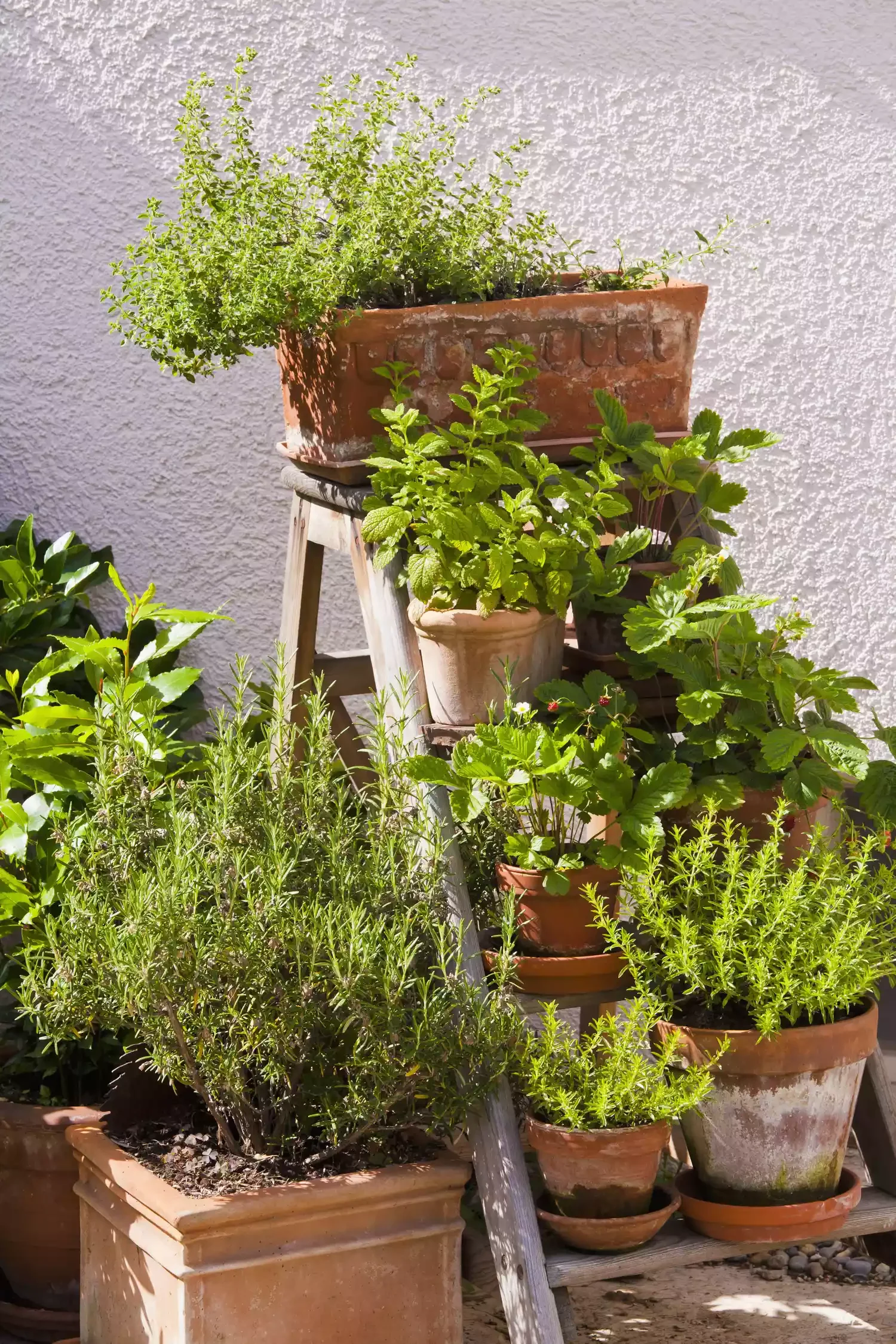
Credit: Westend61 / Getty Images
You can create stunning farmhouse appeal by building vertical gardens using stacked terracotta pots or rustic wooden crates that maximize growing space beautifully.
These DIY-friendly structures work perfectly for herbs that grow bushy or cascade gracefully, adding both functionality and visual interest to any outdoor area.
05. Create a Portable Herb Garden Solution
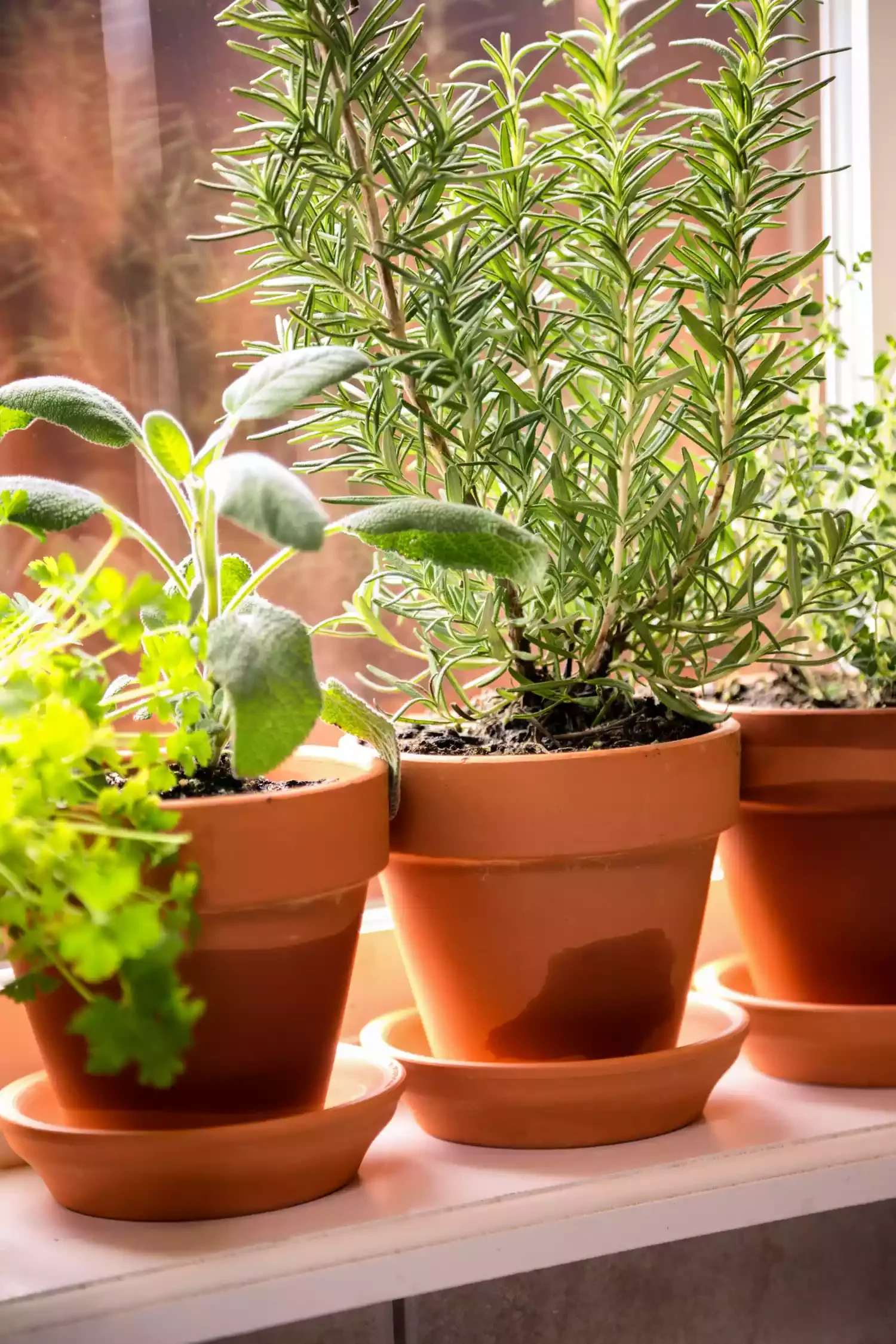
Credit: grandriver / Getty Images
You’ll appreciate the flexibility of mobile herb gardens when winter arrives, allowing you to easily move thriving plants indoors to southwest-facing windows.
Remember that Mediterranean herbs like rosemary and oregano prefer drier soil, while water-loving herbs like basil and cilantro need consistently moist, sunny environments for optimal growth.
06. Cultivate Herbs in Water for Easy Maintenance
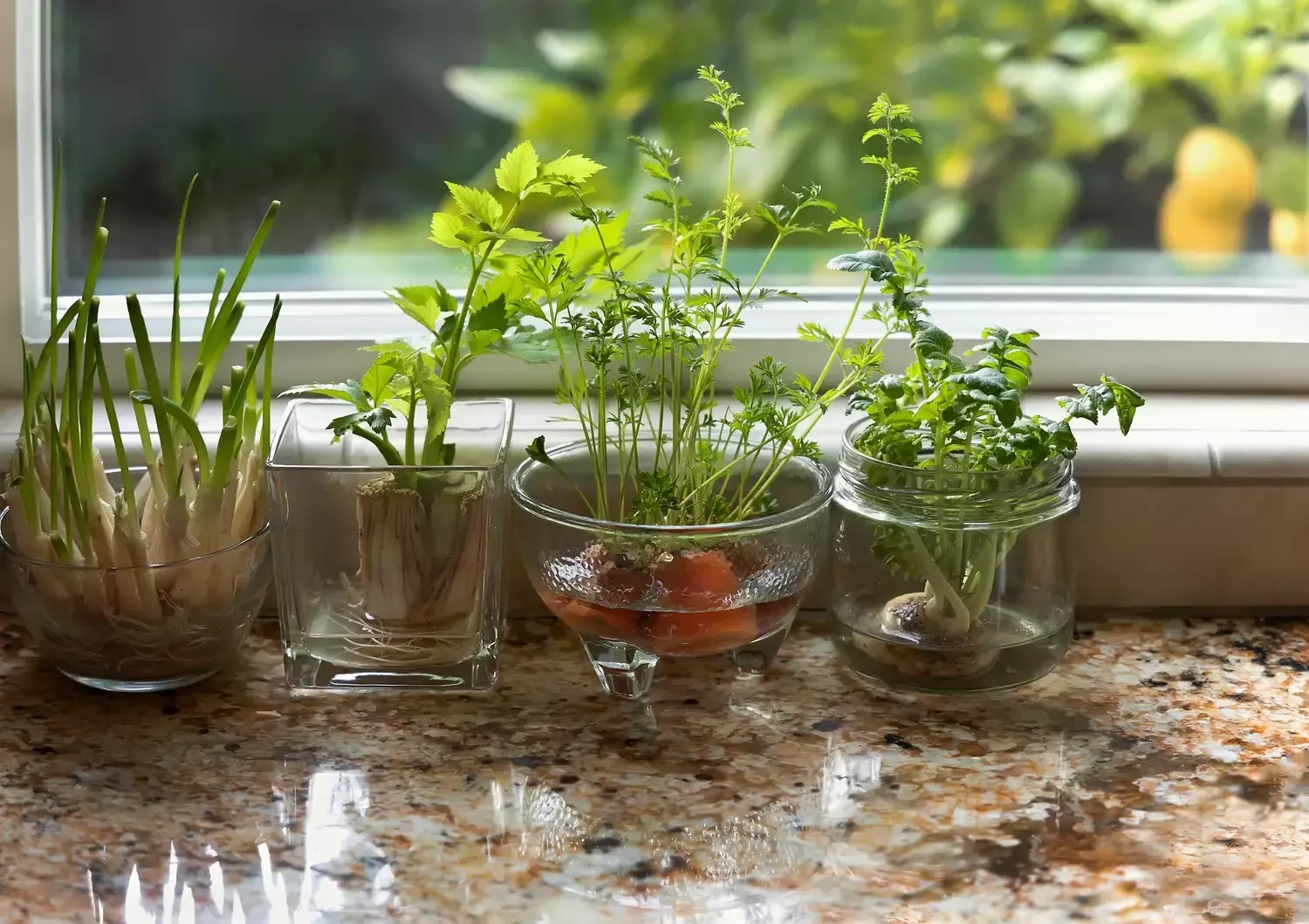
Credit: ggutarin / Getty Images
You can grow beautiful herbs like basil, thyme, mint, and parsley directly in water, creating a soil-free indoor garden that’s virtually pest-proof.
This method provides continuous growth and ensures you always have fresh garnishes ready, while the clean glass containers add a modern decorative touch to your kitchen.
07. Plant Pollinator-Friendly Flowers Near Raised Beds
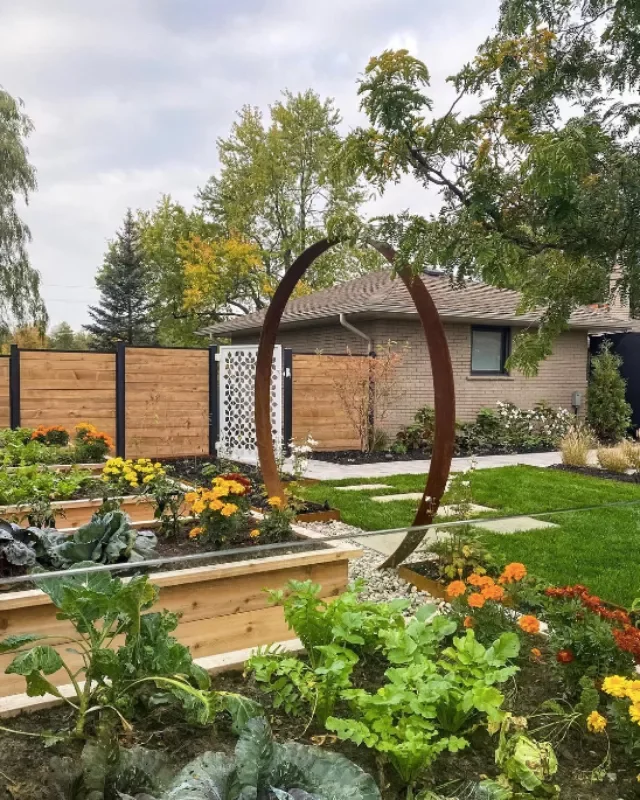
Credit: @ladylandscape / Instagram
You can maximize your garden’s productivity by planting native flowers and pollinator plants directly in front of raised herb beds to attract beneficial bees.
This strategic companion planting not only supports your flowering herbs but also provides essential nutrients for butterfly larvae while creating a stunning layered landscape design.
08. Mix Different Planter Styles for Visual Impact
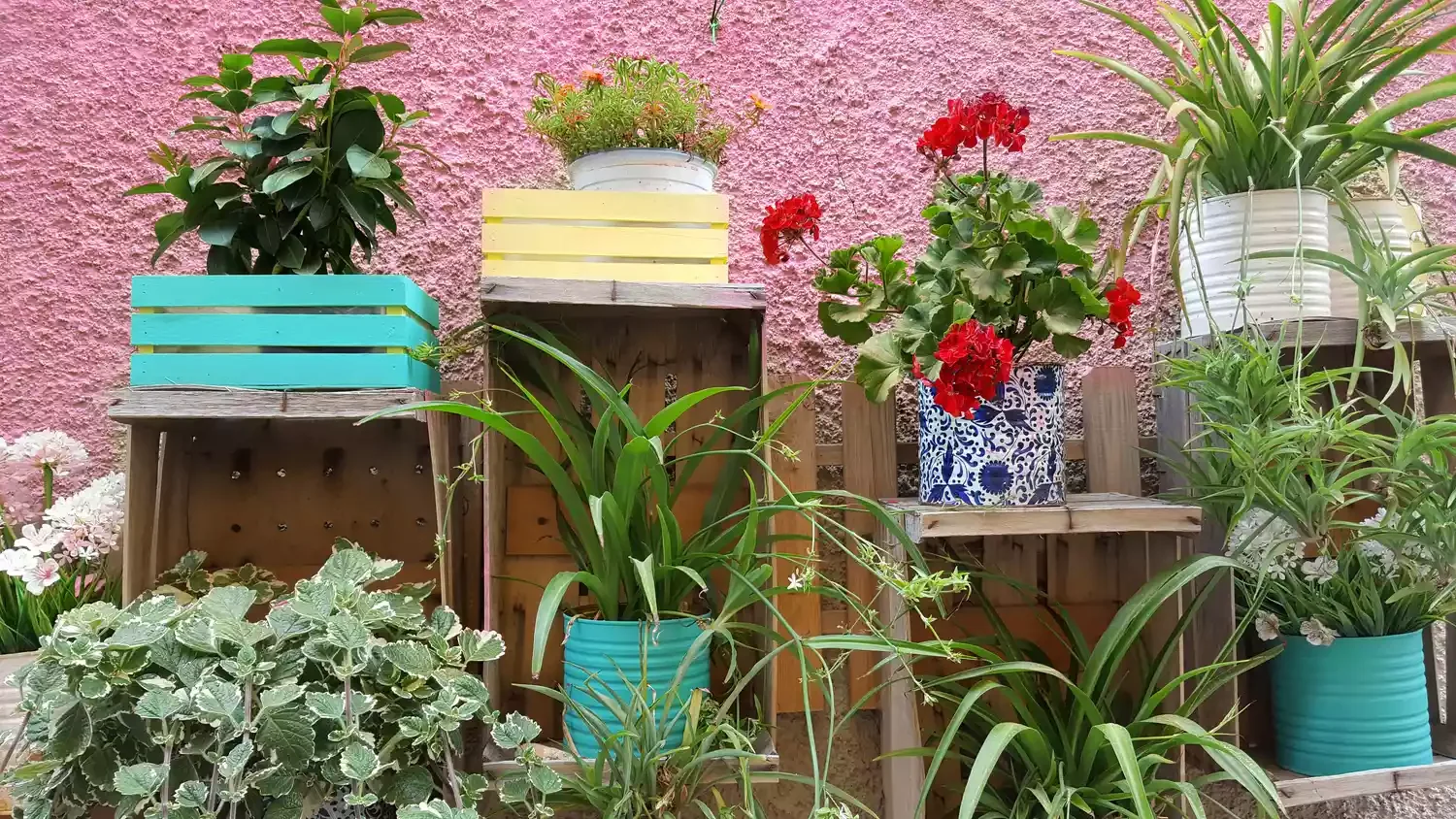
Credit: Busà Photography / Getty Images
You’ll create an exciting maximalist look by mixing planters of various shapes, colors, styles, and textures throughout your herb garden space.
This eclectic approach adds visual interest and personality while allowing you to repurpose containers you already own, making your garden uniquely yours and budget-friendly.
09. Line Rock Walls with Cascading Herbs

Credit: BasieB / Getty Images
You can create a stunning rock garden effect by planting herbs like summer savory or creeping thyme along stone walls where they’ll cascade beautifully.
The wall provides natural protection and support while your herbs grow and flow over the edges, creating an organic, cottage-garden appearance that’s absolutely charming.
10. Utilize Bathroom Humidity for Moisture-Loving Herbs
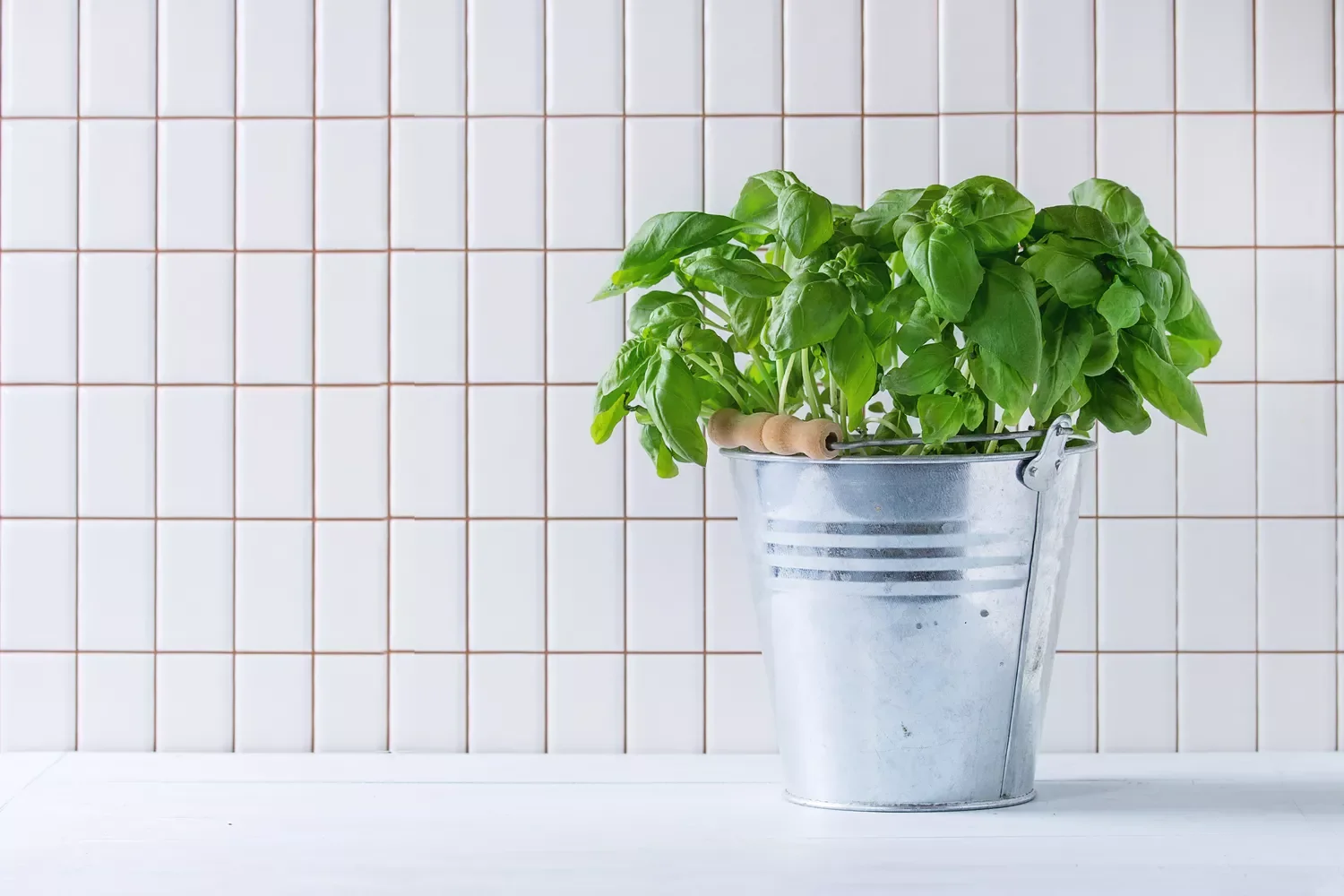
Credit: Natasha Breen / EyeEm / Getty Images
Your bathroom can become an unexpected greenhouse for water-loving herbs like basil and cilantro, especially in compact apartments where the shower is near the kitchen.
The high humidity and moisture from daily showers create ideal growing conditions while adding fresh greenery to your bathroom’s decor scheme.
11. Install a Space-Saving Balcony Trellis Garden

Credit: Kamadie / Getty Images
You can maximize your small balcony space by installing a vertical trellis garden on the wall that accommodates all your most-used culinary herbs.
This clever solution provides enough room for basil, dill, cilantro, and parsley while keeping your floor space clear for seating and entertaining areas.
12. Start Your Seeds Indoors for Early Growth
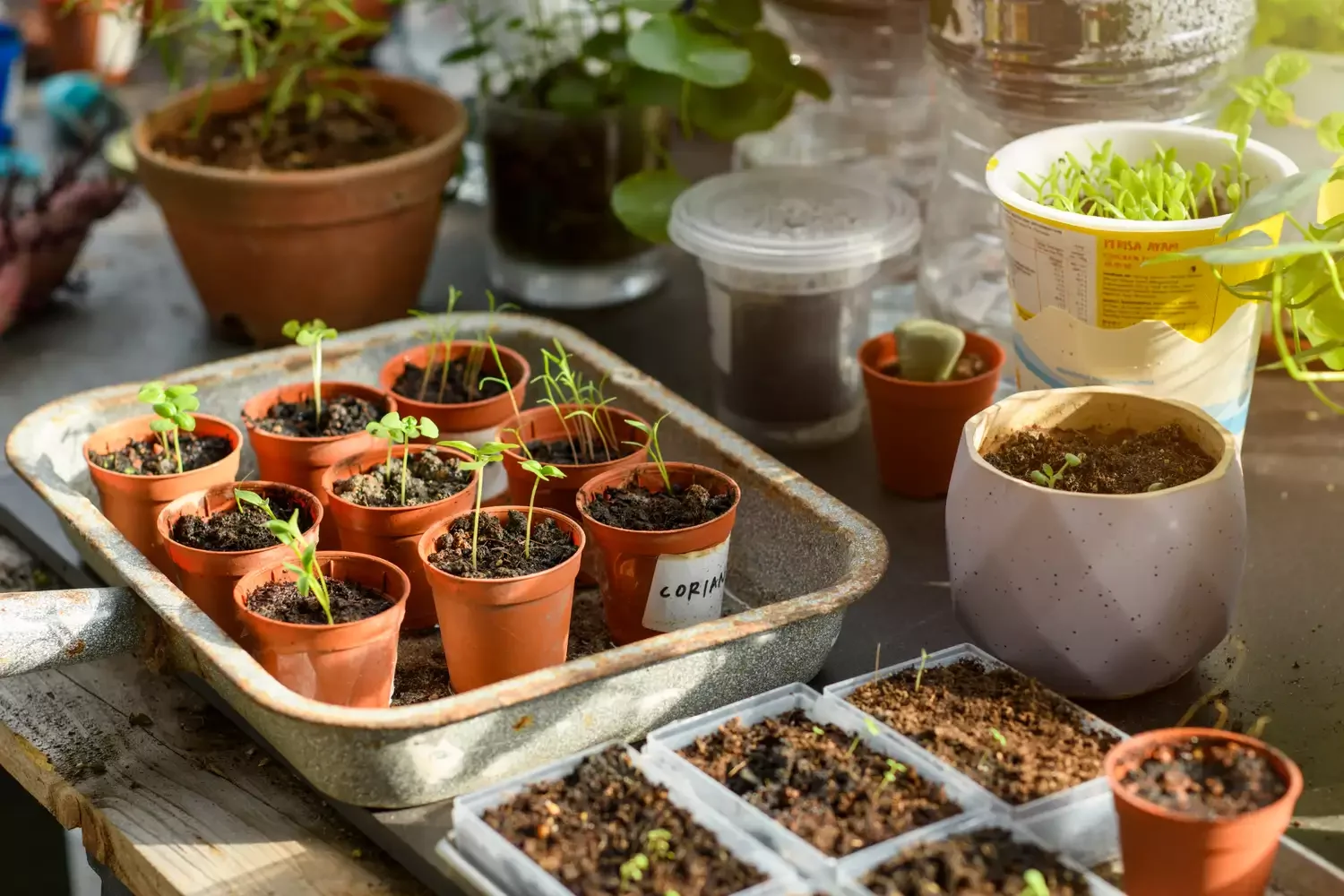
Credit: Jordan Lye / Getty Images
You’ll get a beautiful boost of green during off-season months by starting herb seeds indoors, allowing seedlings to develop strong root systems.
This practical approach gives your herbs a head start before transplanting outdoors while bringing natural beauty into your home during dreary winter months.
13. Upcycle a Wood Pallet Into a Multi-Tiered Garden
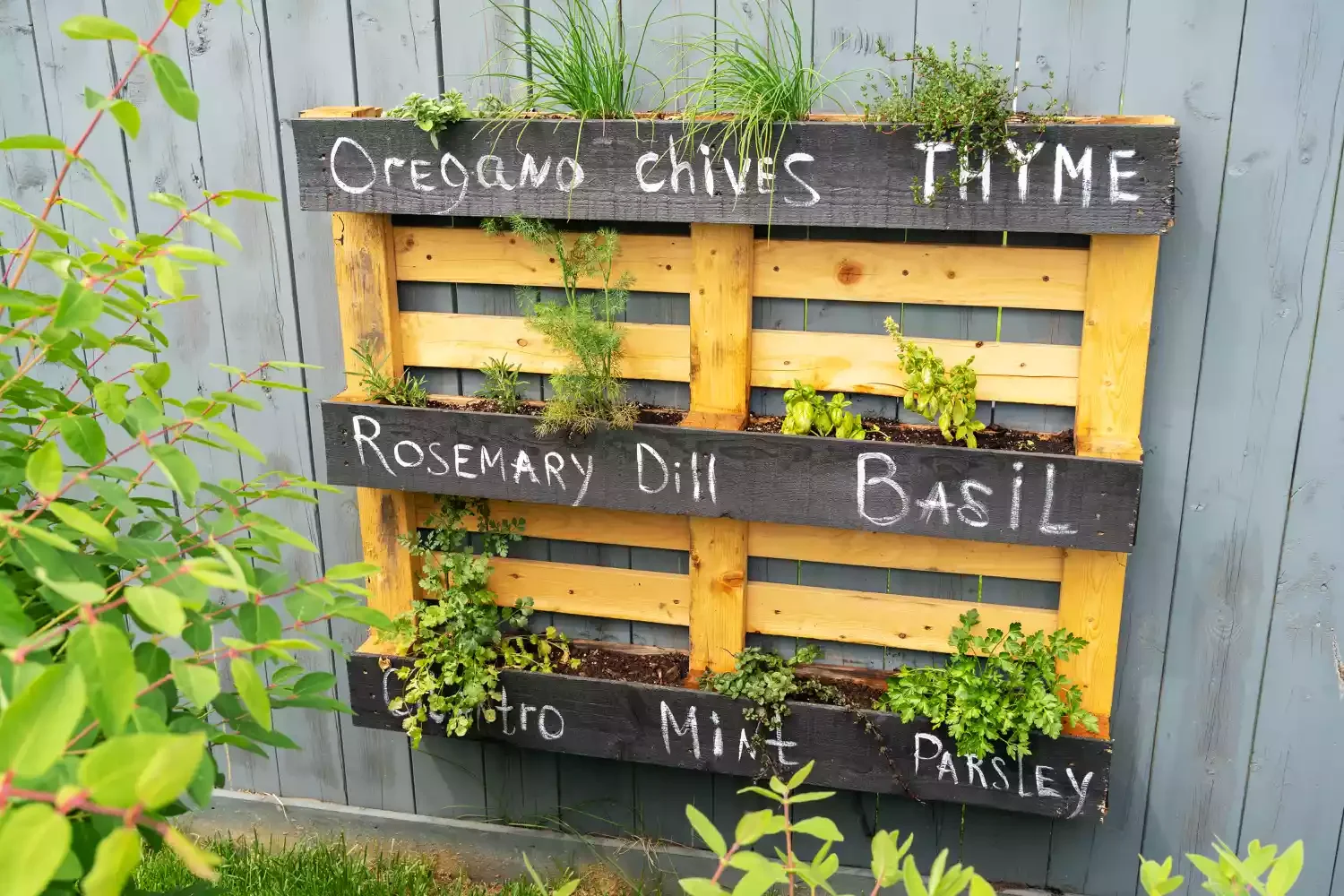
Credit: Oksana Aksenova / Getty Images
You can transform a simple wood pallet into a perfect upcycled herb garden with multiple planting spots and flat surfaces for labeling.
This eco-friendly solution can lean against walls or be mounted in city gardens, providing vertical growing space while adding rustic charm to your outdoor decor.
14. Design a Whimsical Cottage-Style Herb Garden
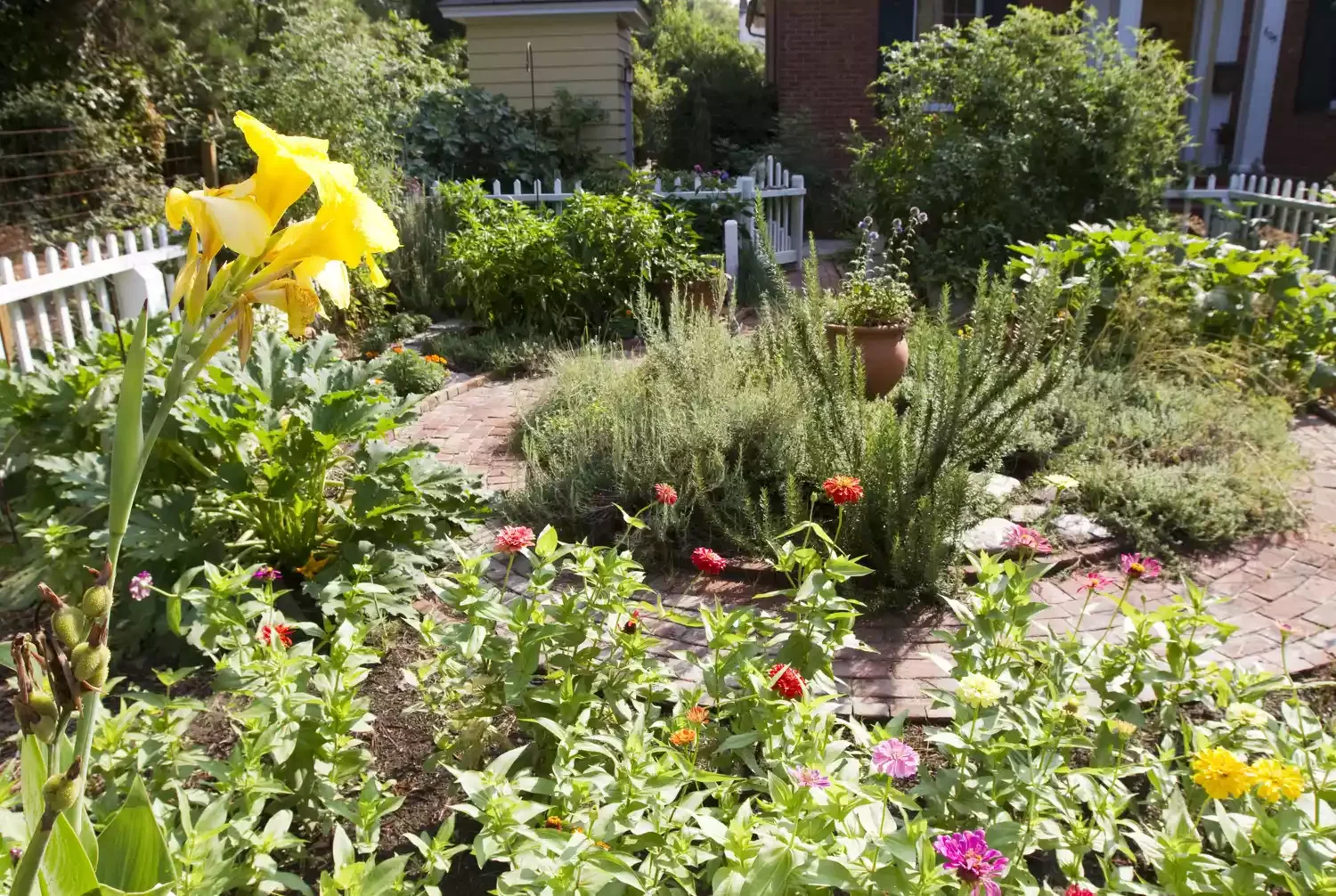
Credit: Newport News Daily Press / Getty Images
You’ll create enchanting cottage garden appeal by letting herbs like dill, lavender, basil, thyme, sage, and bee balm grow freely with minimal manicuring.
This popular English planting style embraces natural growth patterns while maintaining just enough structure to keep plants manageable and your garden looking beautifully wild.
15. Choose Woody Herbs for Year-Round Greenery
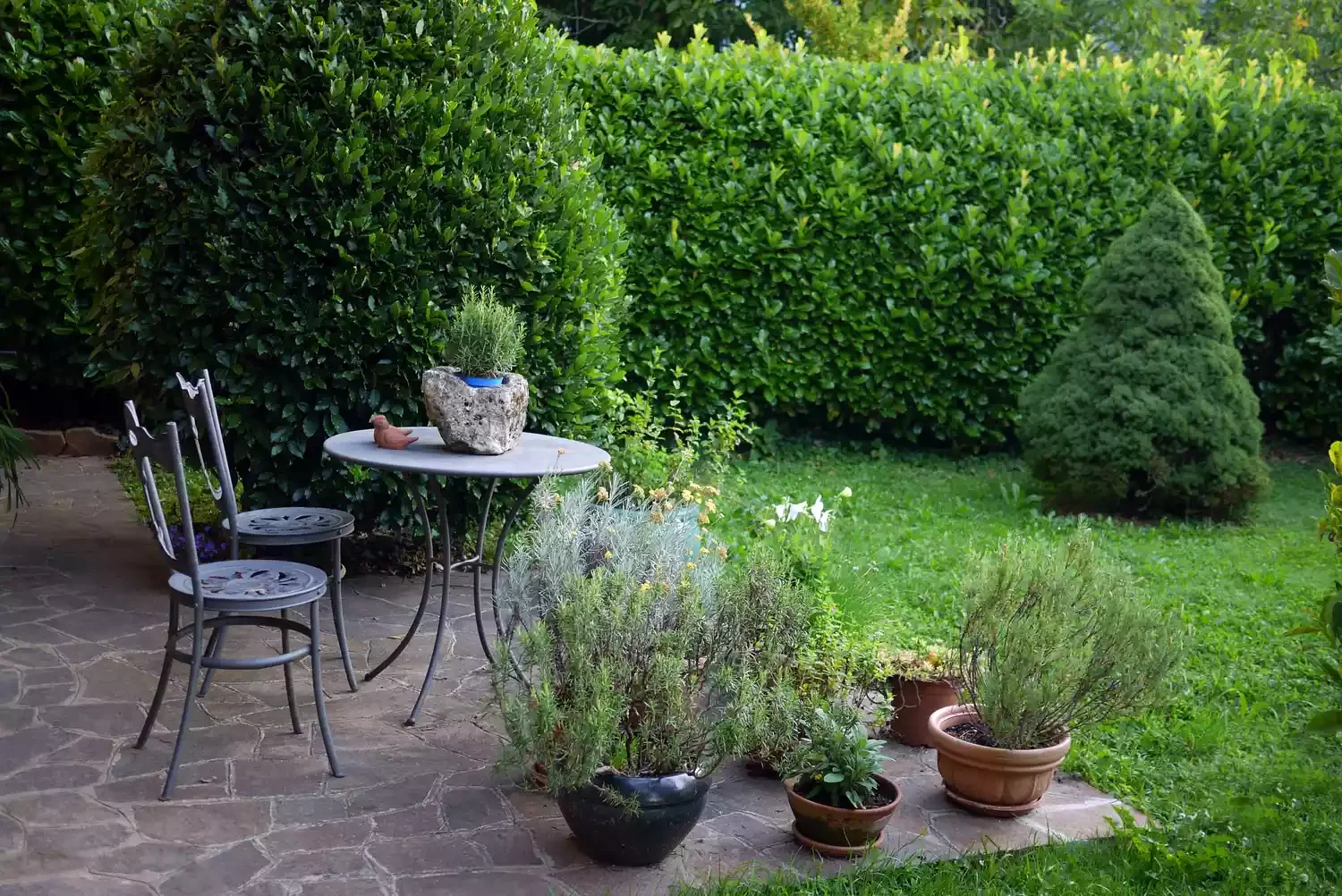
Credit: Rosmarie Wirz / Getty Images
You can enjoy low-maintenance gardening by planting evergreen woody herbs like lavender and rosemary that provide year-round color and texture.
These hardy herbs continue growing throughout winter in many climates, ensuring your garden maintains its beauty and functionality even during colder months.
16. Install Grow Lights for Optimal Indoor Growth
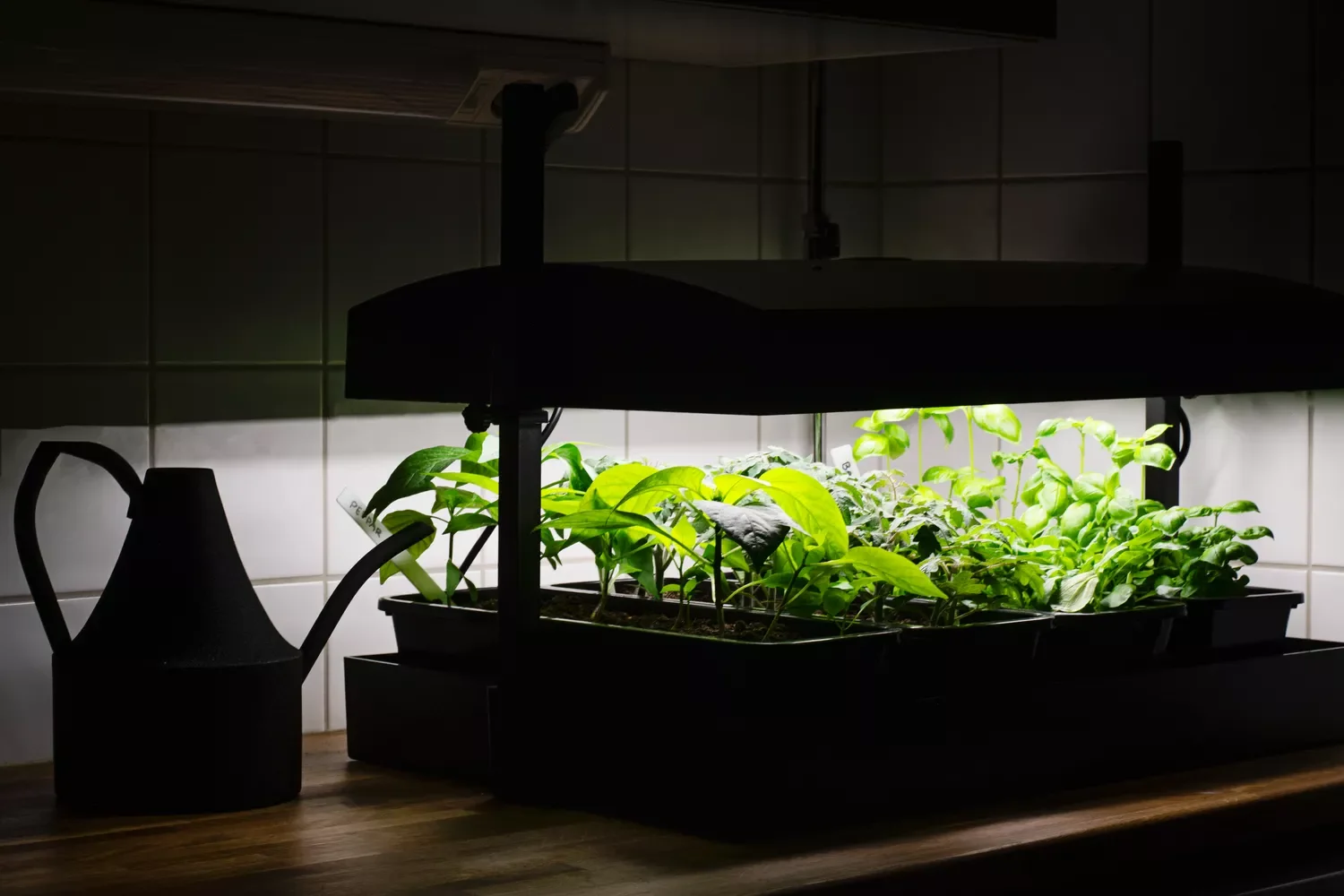
Credit: Susie Hedberg / Getty Images
You’ll help your indoor herbs thrive by adding grow lights to supplement natural window light, especially since herbs prefer full sun conditions.
Professional gardeners recommend grow lights to provide the six-plus hours of direct sunlight that herbs need daily for healthy, vigorous growth indoors.
17. Repurpose Broken Mugs for Mini Herb Containers
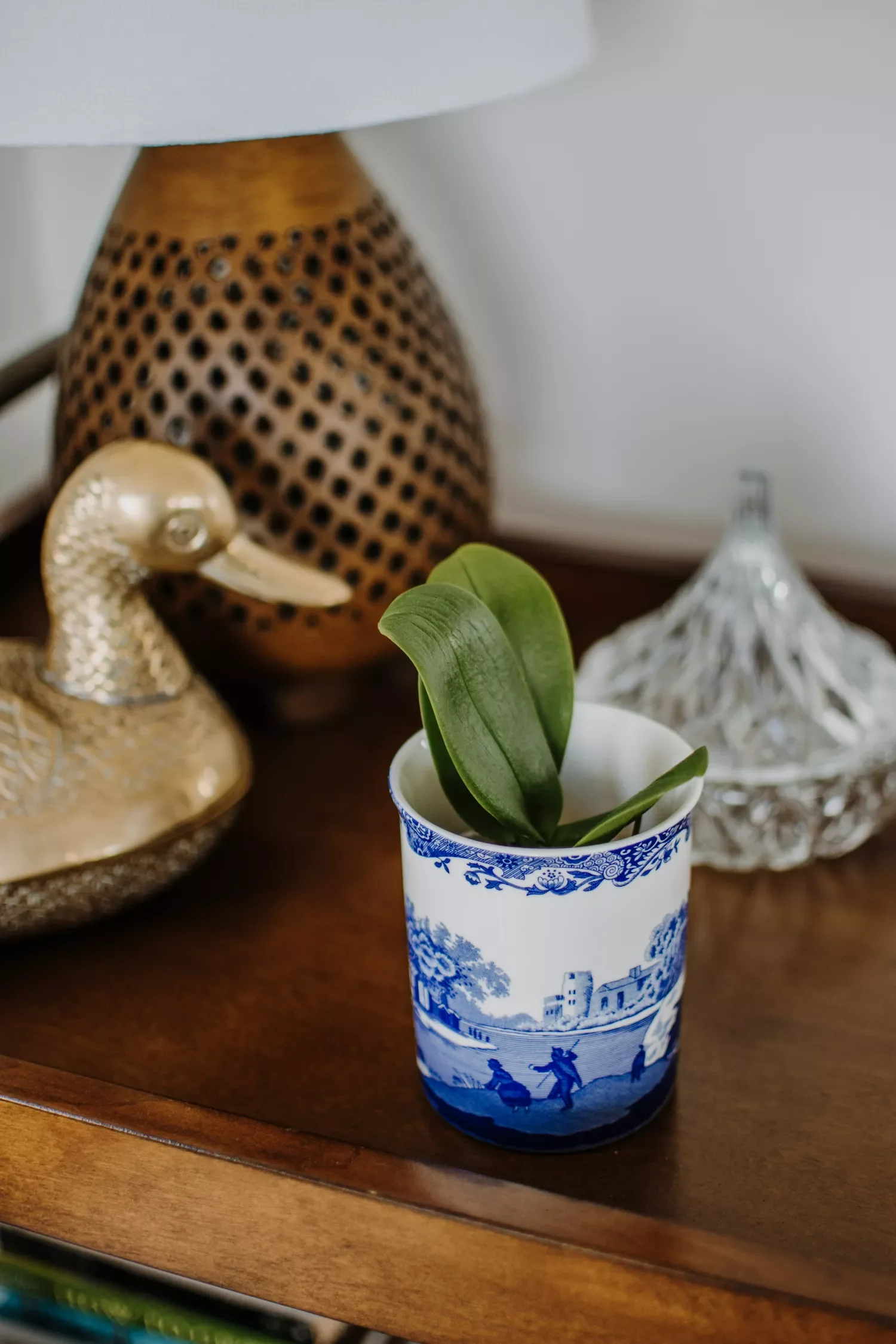
Credit: Heather Bien
You can give beloved broken mugs new life as charming mini containers for small herbs like rosemary, oregano, or thyme.
Just ensure proper drainage by drilling small holes, and you’ll have adorable conversation-piece planters that add personal touches to your windowsill garden display.
18. Use Creative Upcycled Containers for Unique Planters
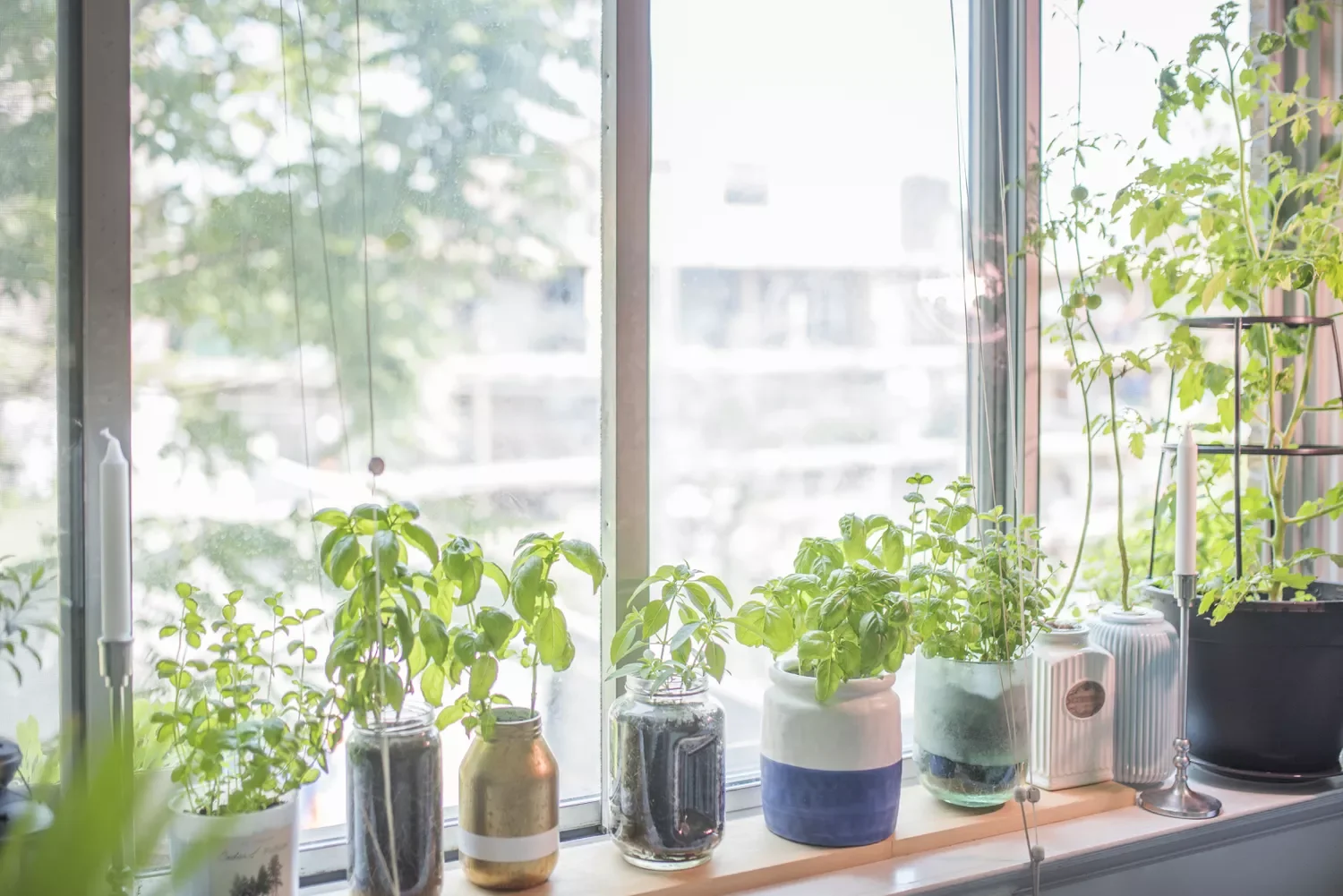
Credit: Zhuqin Chen / Getty Images
You can create an eclectic herb garden using containers you already own, from metal bins and wooden boxes to tin cans and plastic bottles.
As long as you ensure proper drainage, your herbs will thrive while you save money and reduce waste through creative repurposing of household items.
19. Plant Herb Groundcover for Living Pathways
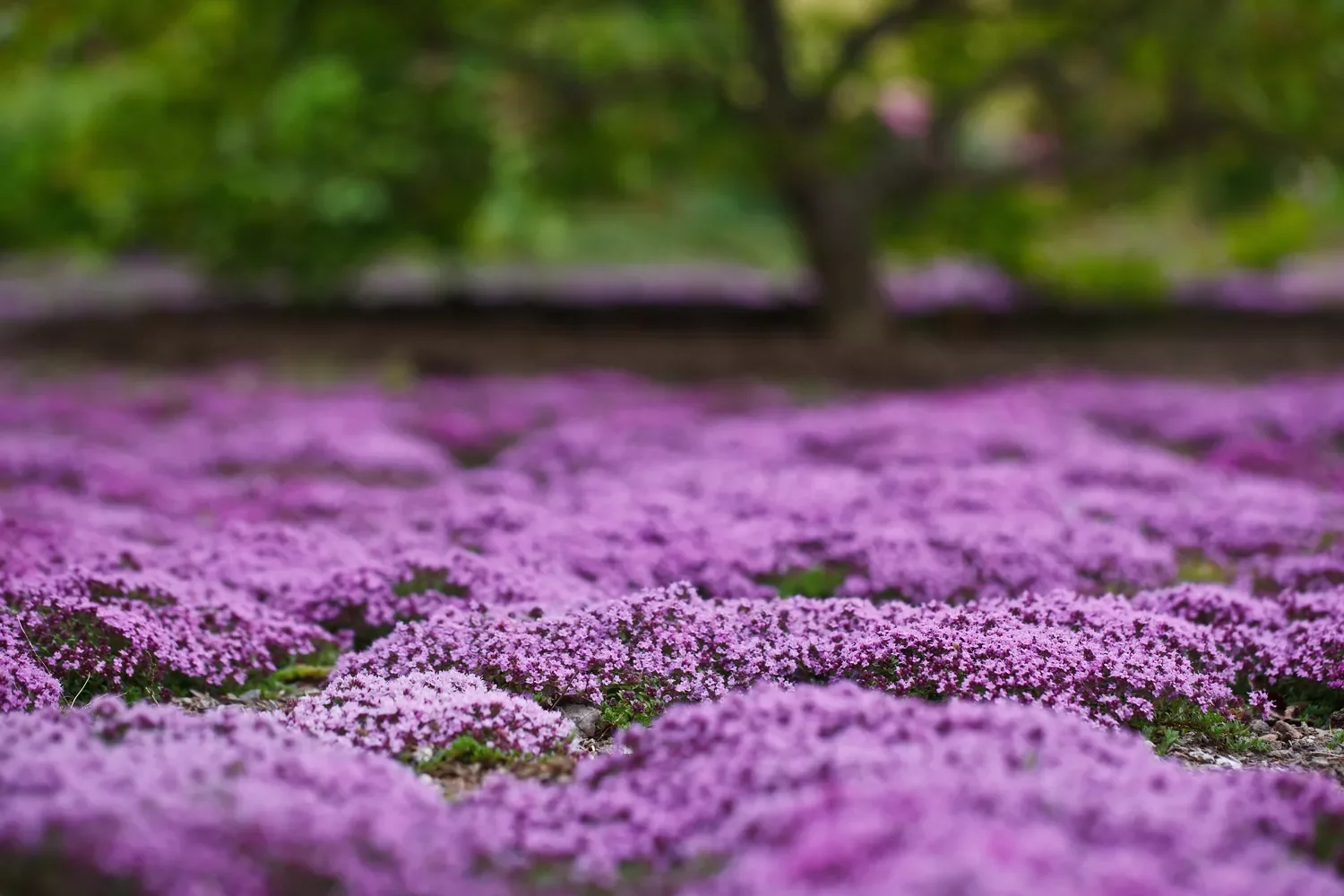
Credit: Laszlo Podor / Getty Images
You can fill spaces between pavers, walkways, and tall plants with aromatic groundcover herbs that release fragrance when stepped on lightly.
Trailing rosemary, creeping oregano, creeping thyme, and Corsican mint work beautifully in low-traffic areas while adding texture and scent to your landscape design.
20. Maximize Windowsill Space with Sun-Loving Herbs
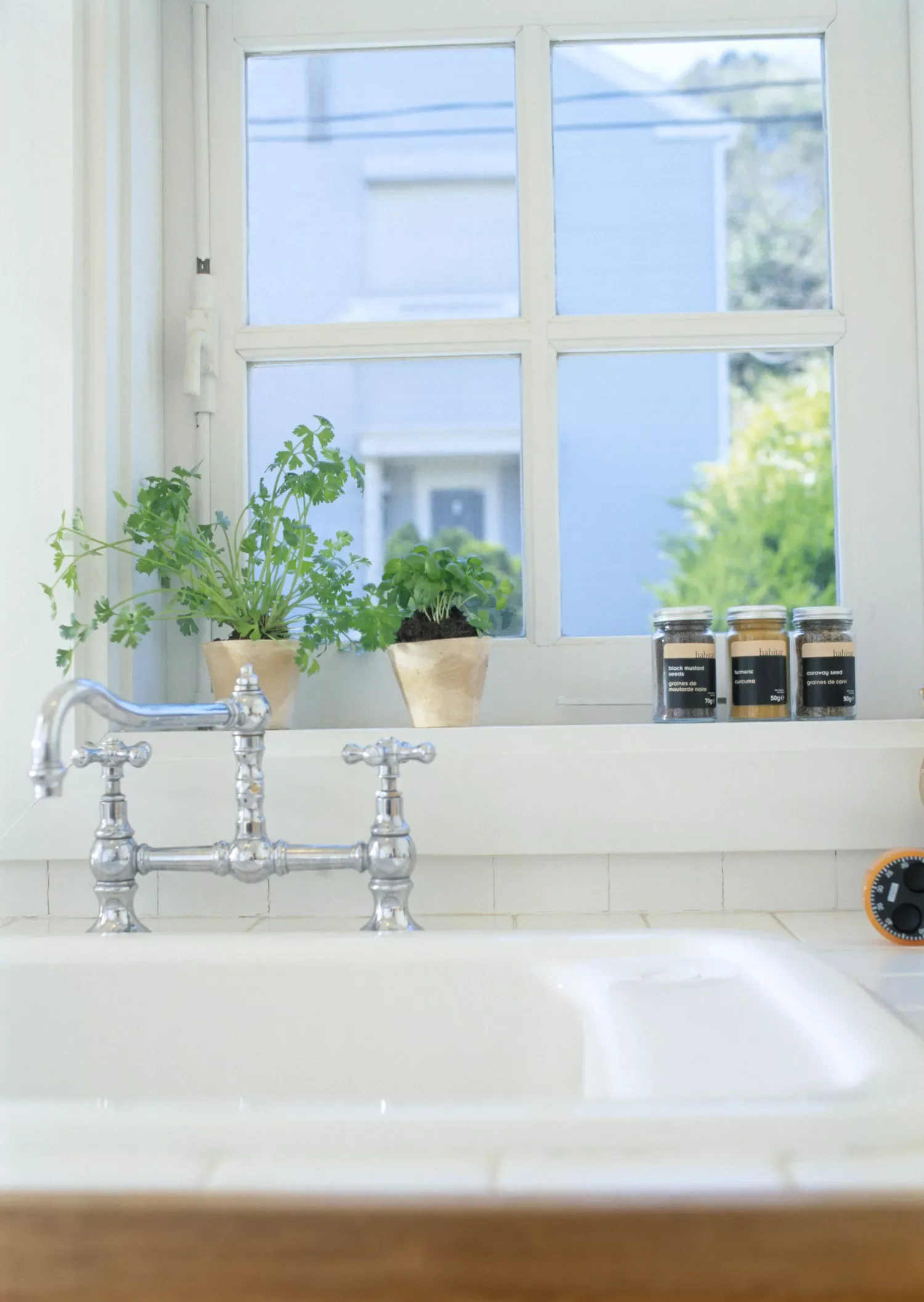
Credit: imagenavi / Getty Images
You can make the most of your sunny windowsills by lining them with small pots containing herbs like rosemary, thyme, hyssop, and sage.
These sun-loving varieties thrive in bright window locations while keeping fresh herbs conveniently accessible for daily cooking and adding greenery to your interior decor.
21. Build a Dual-Purpose Herb Garden Table
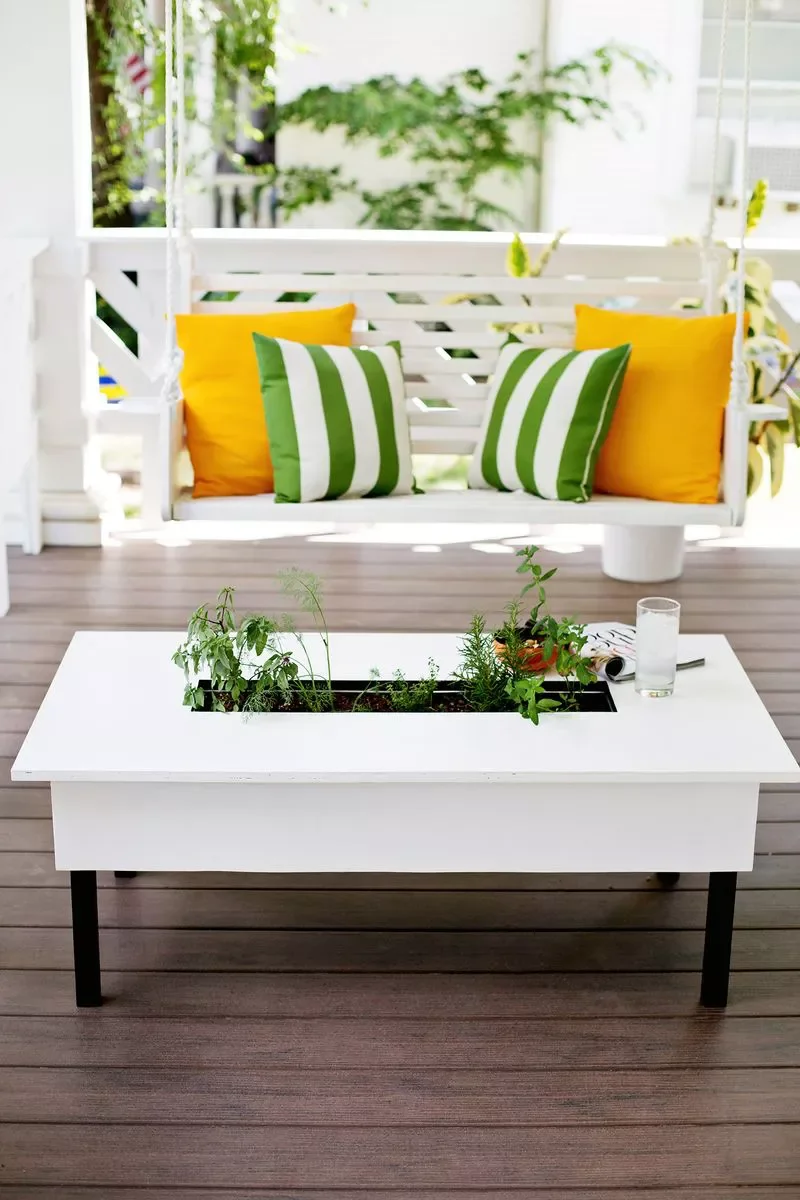
Credit: A Beautiful Mess
You can create furniture with double functionality by building an outdoor coffee table featuring a built-in planter in the center for growing herbs.
This DIY project provides the perfect setup for cultivating herbs that complement summer dishes enjoyed alfresco while serving as both seating and growing space.
22. Integrate Herbs Into Desert-Inspired Rock Gardens
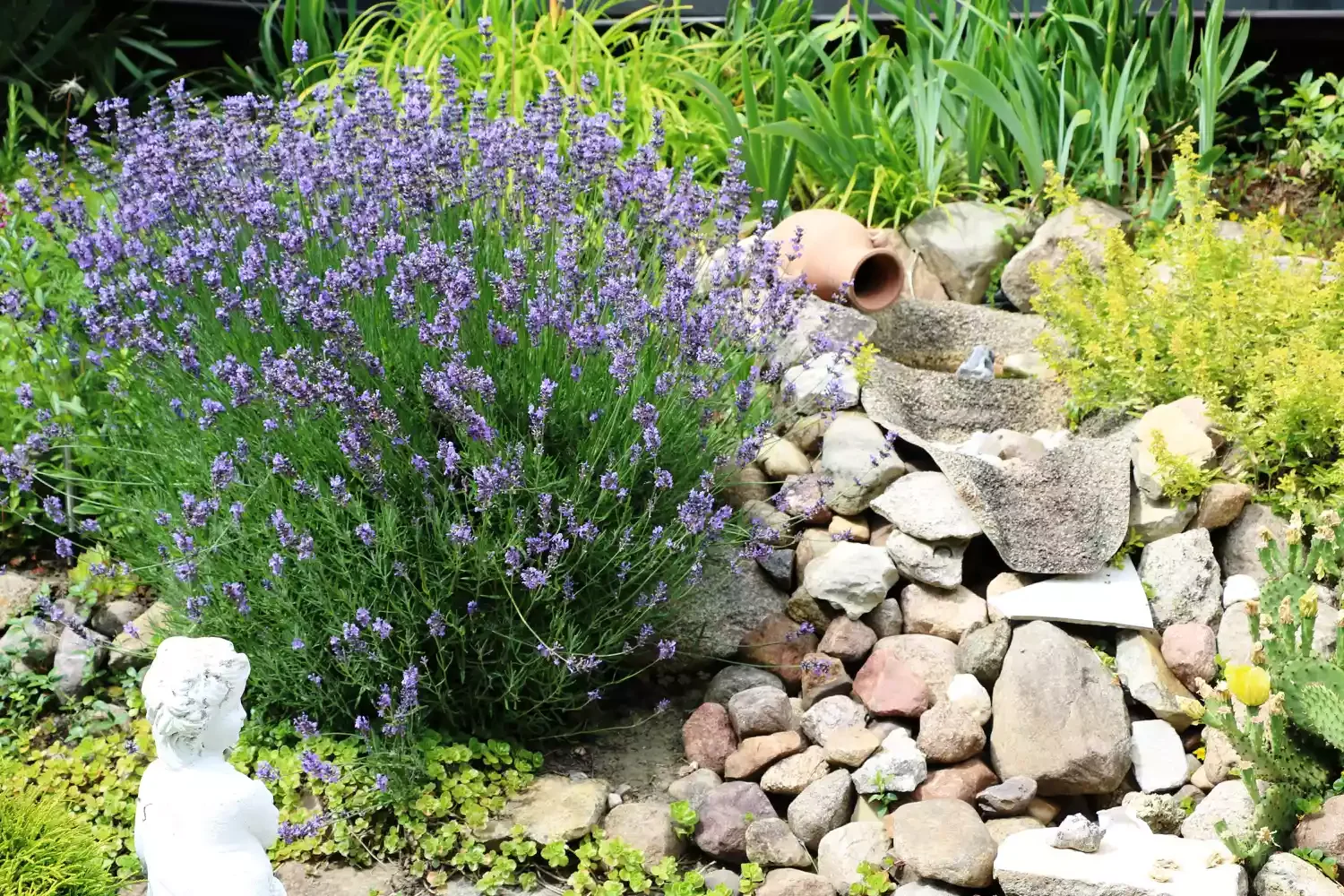
Credit: ClaraNila / Getty Images
You’ll create stunning textural contrast by planting Mediterranean herbs like thyme, rosemary, marjoram, and sage among decorative rocks and succulents.
This desert-inspired design approach combines practical herb growing with striking visual appeal while requiring minimal water and maintenance for busy lifestyles.
23. Surround Patios with Natural Mosquito-Repelling Herbs
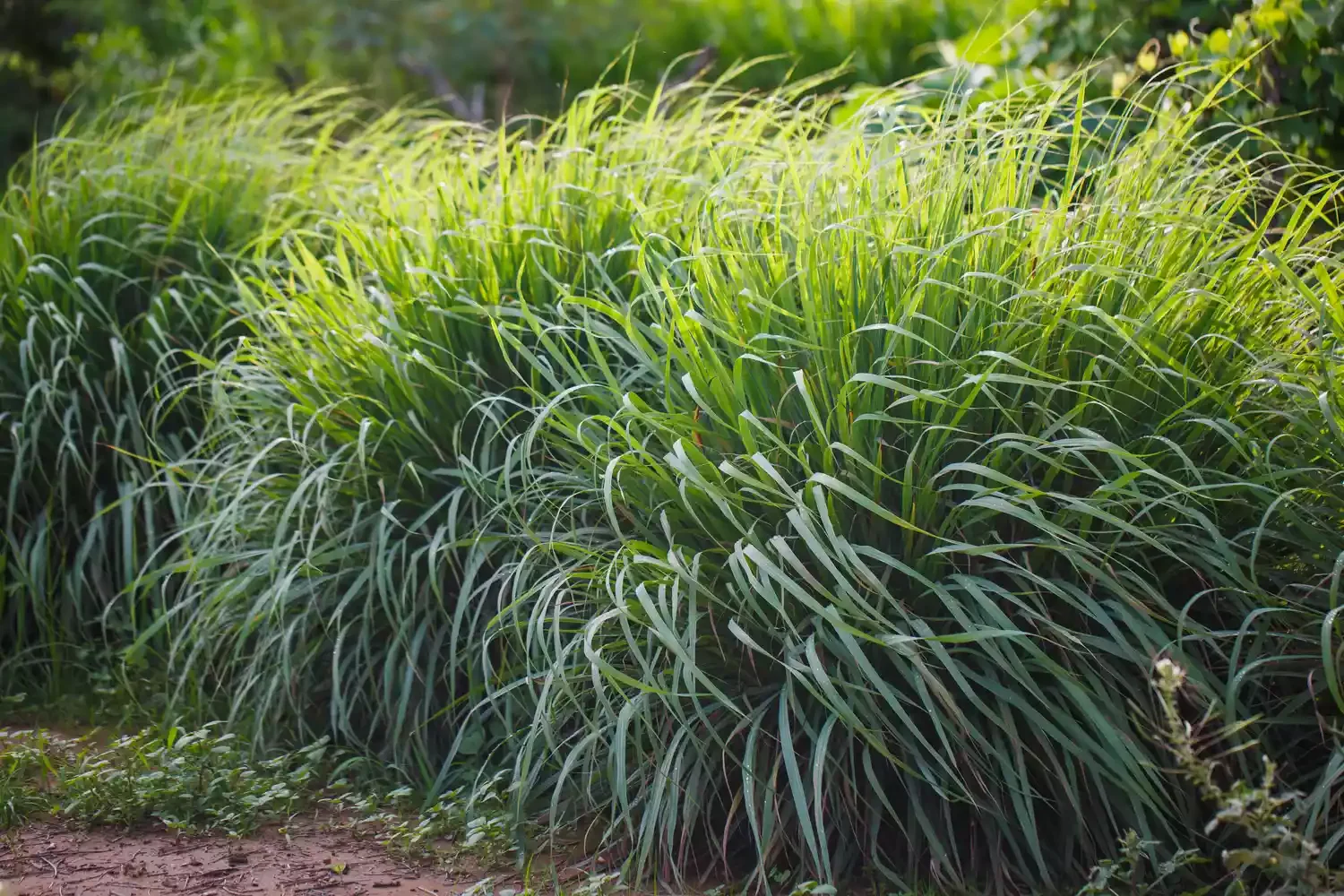
Credit: bgton / Getty Images
You can naturally deter mosquitoes and bugs by planting lemongrass and lavender around outdoor gathering spaces like patios and decks.
While not as effective as commercial bug spray, these aromatic herbs add lovely fragrance and lush greenery while providing some natural pest protection.
24. Add Charm with Traditional Window Box Herb Gardens
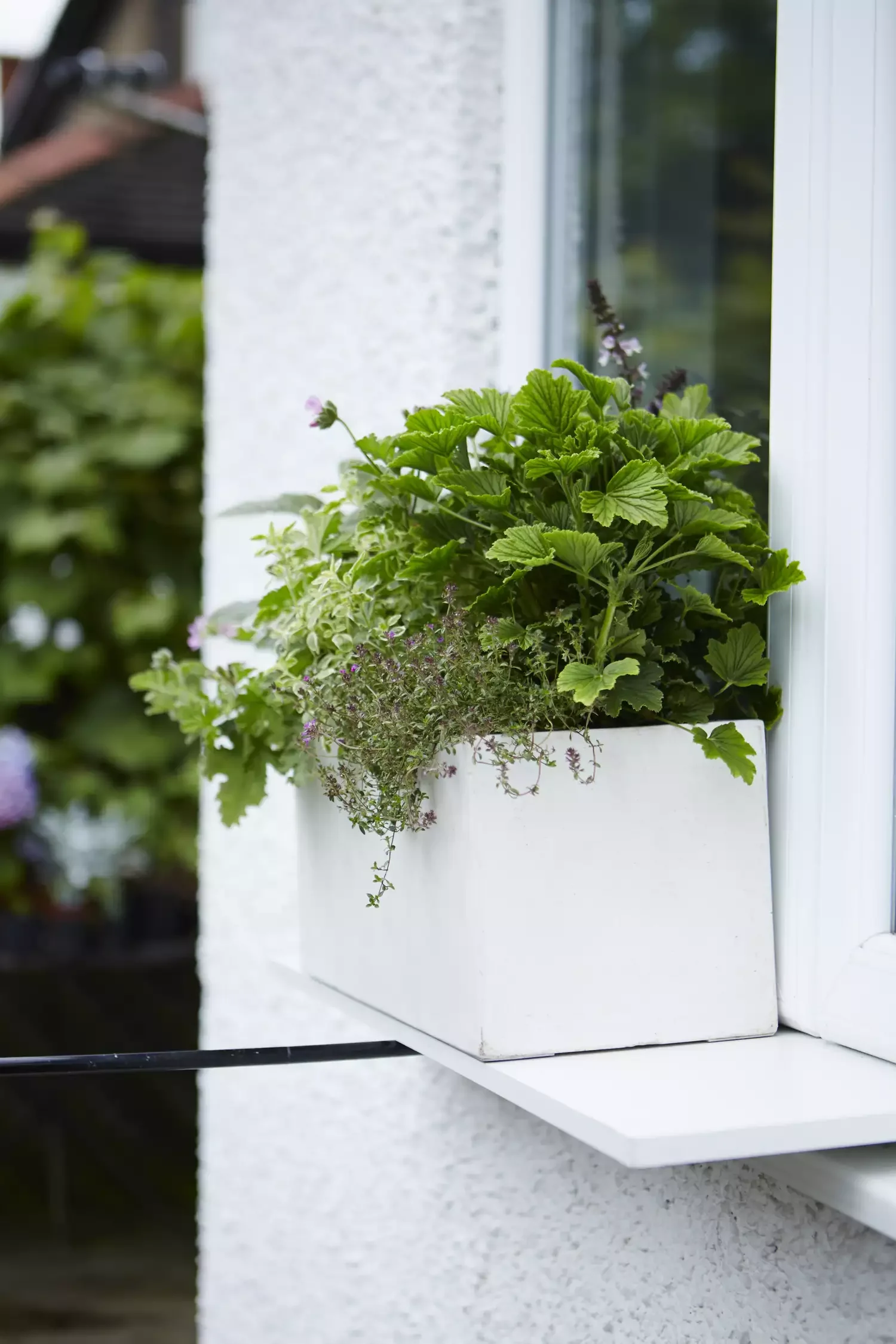
Credit: Dorling Kindersley: Will Heap / Getty Images
You can boost your home’s curb appeal while growing fresh herbs by installing window boxes outside your kitchen window for easy access.
These charming planters work mounted traditionally under windows or creatively attached to fences, providing convenient herb storage with classic architectural appeal.
25. Start with Complete Herb Growing Kits
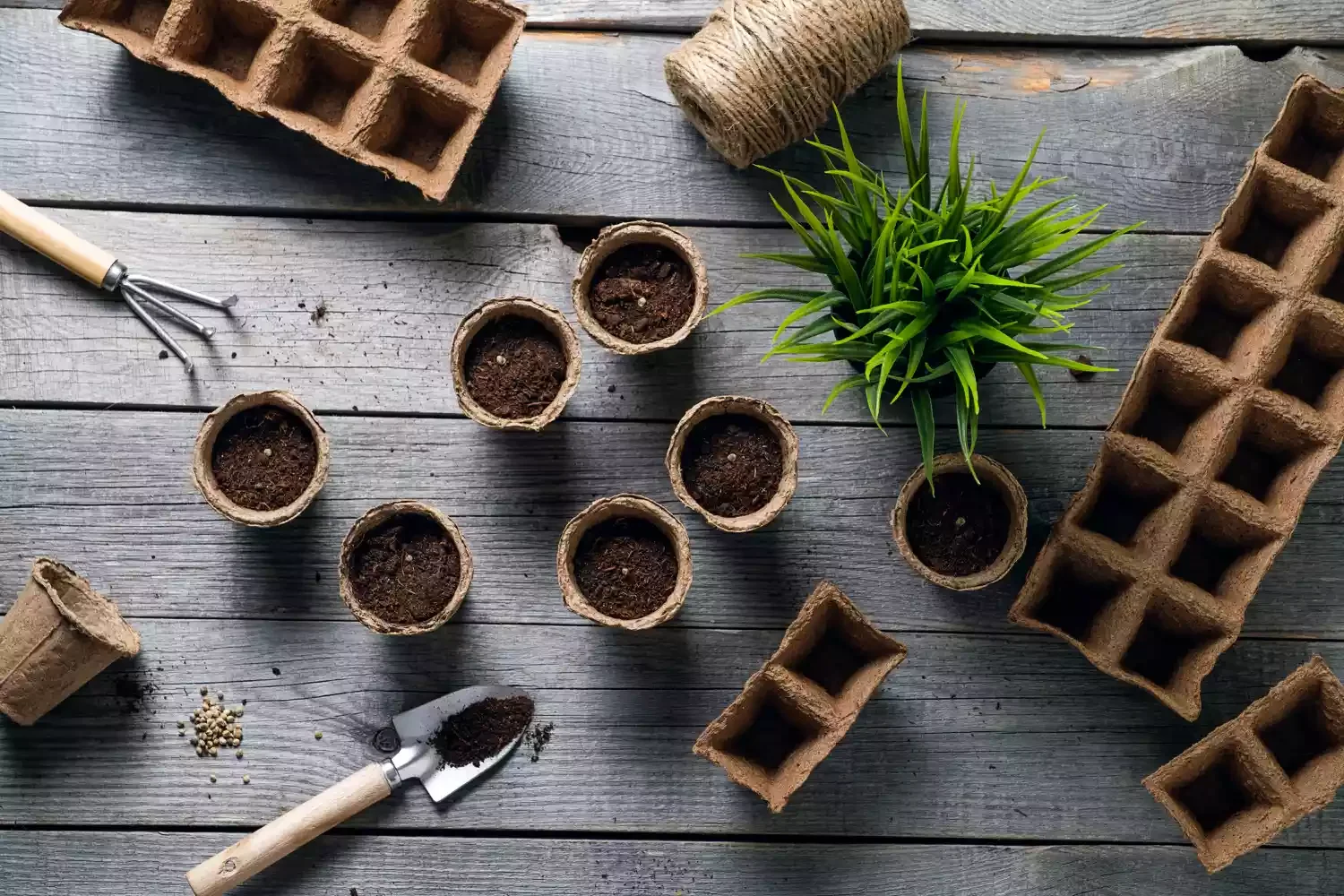
Credit: Aleksandr Zubkov / Getty Images
You’ll set yourself up for success by choosing comprehensive grow kits that include seeds, starting pellets, tabletop greenhouses, and heat mats.
These all-in-one solutions provide everything needed for successful herb gardening, including grow lights to supplement indoor sunlight and detailed instructions for beginners.
26. Keep Fresh Mint Near Your Home Bar Setup
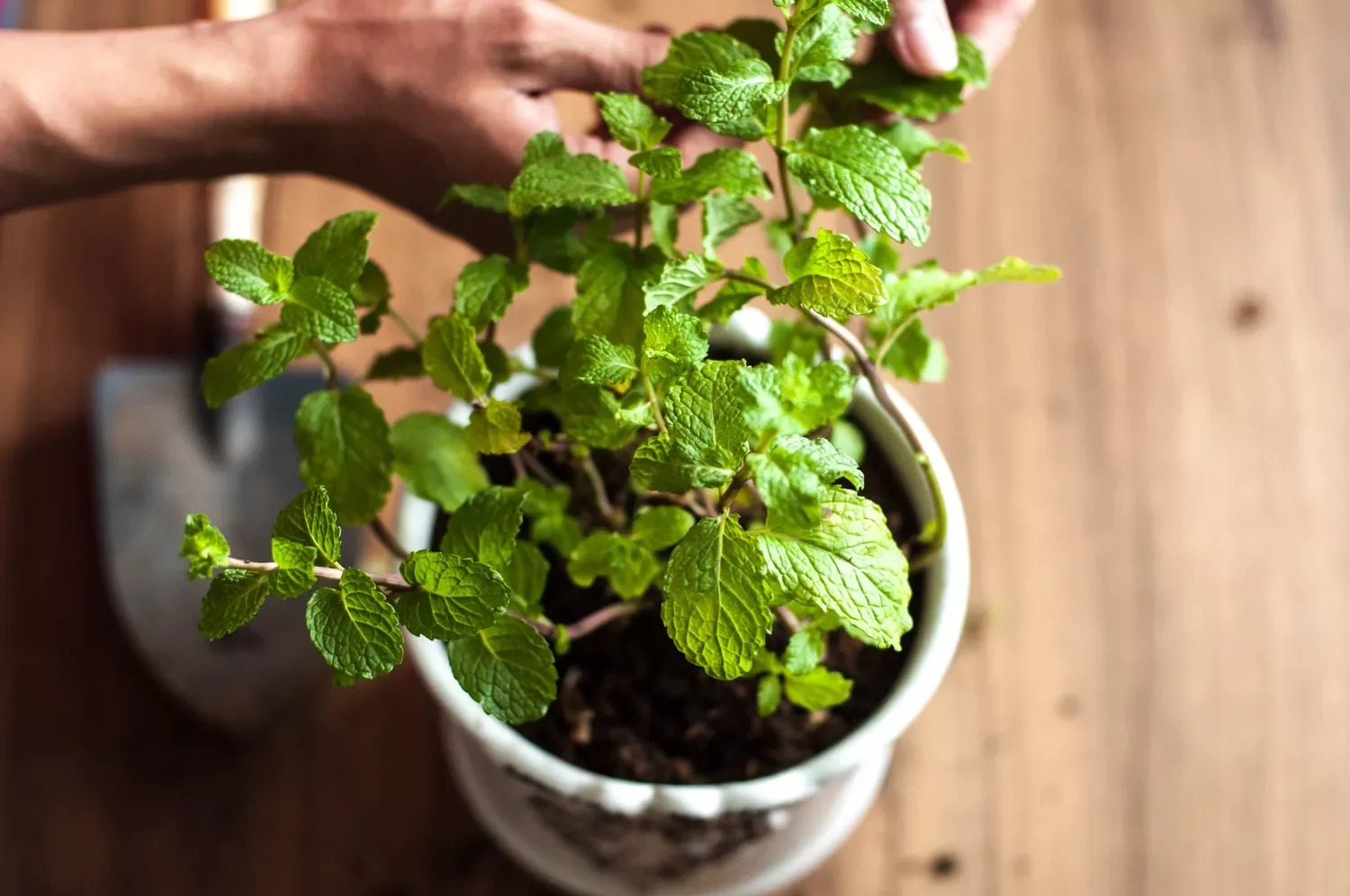
Credit: Karl Tapales / Getty Images
You’ll elevate your cocktail game by growing fresh mint within easy reach of your bar cart or drink preparation area for muddling.
Having fresh mint readily available transforms summer lemonades, mojitos, and mocktails while adding a lovely green accent to your entertaining space’s decor.
27. Transform Railings Into Productive Growing Space
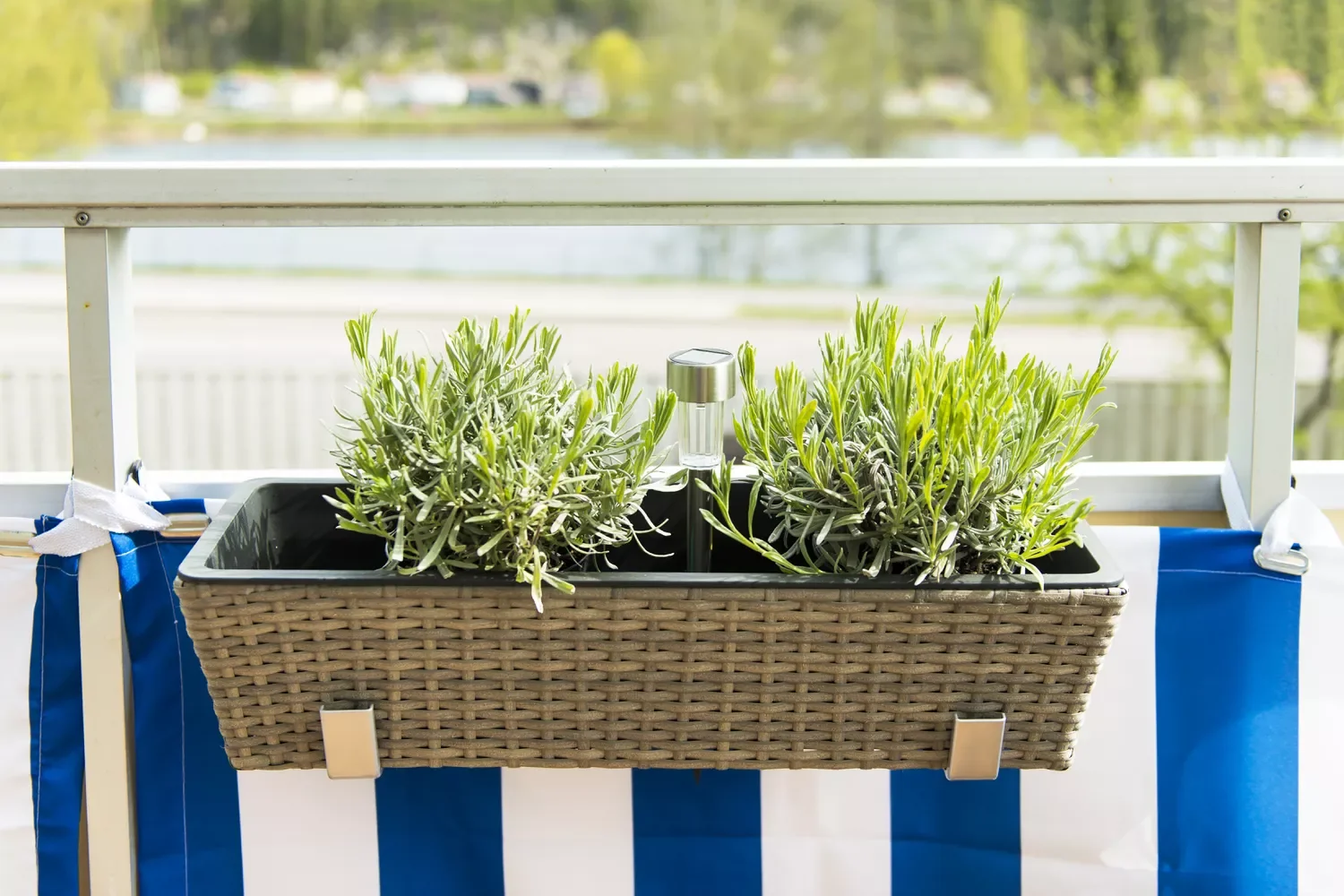
Credit: Huskystudio_se / Getty Images
You can maximize every inch of growing space by hanging rail planters from sunny balcony or deck railings for thriving herb gardens.
Just remember to consider who might be below when watering, and you’ll have a space-efficient herb garden that doesn’t take up valuable floor space.
28. Use Classic Terracotta for Bush-Style Herbs
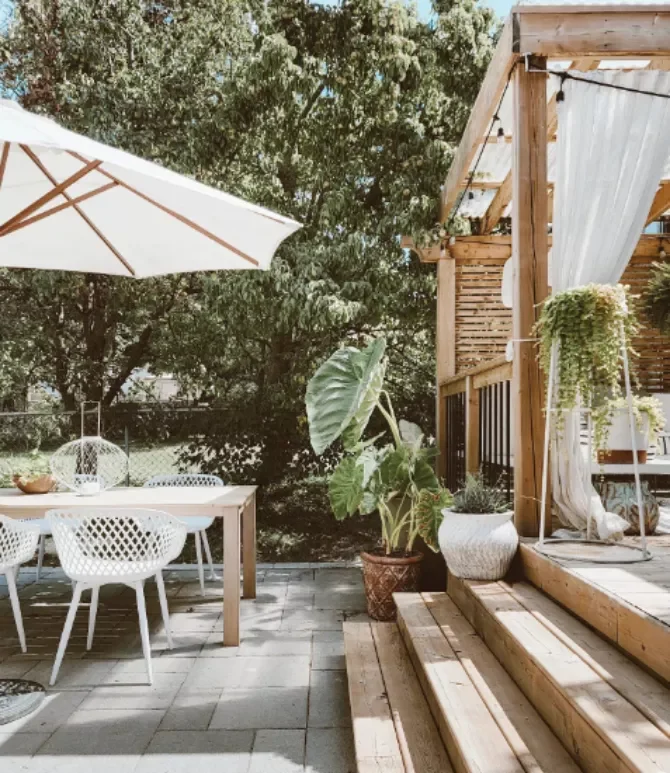
Credit: @kirsten.diane / Instagram
You can create beautiful landscape features using terracotta planters filled with herbs that grow into full bushes like rosemary and lavender.
These classic containers complement any garden style while allowing you to treat your herbs as decorative landscaping plants that also provide fresh harvests.
29. Build Raised Beds for Pest Protection and Visual Interest
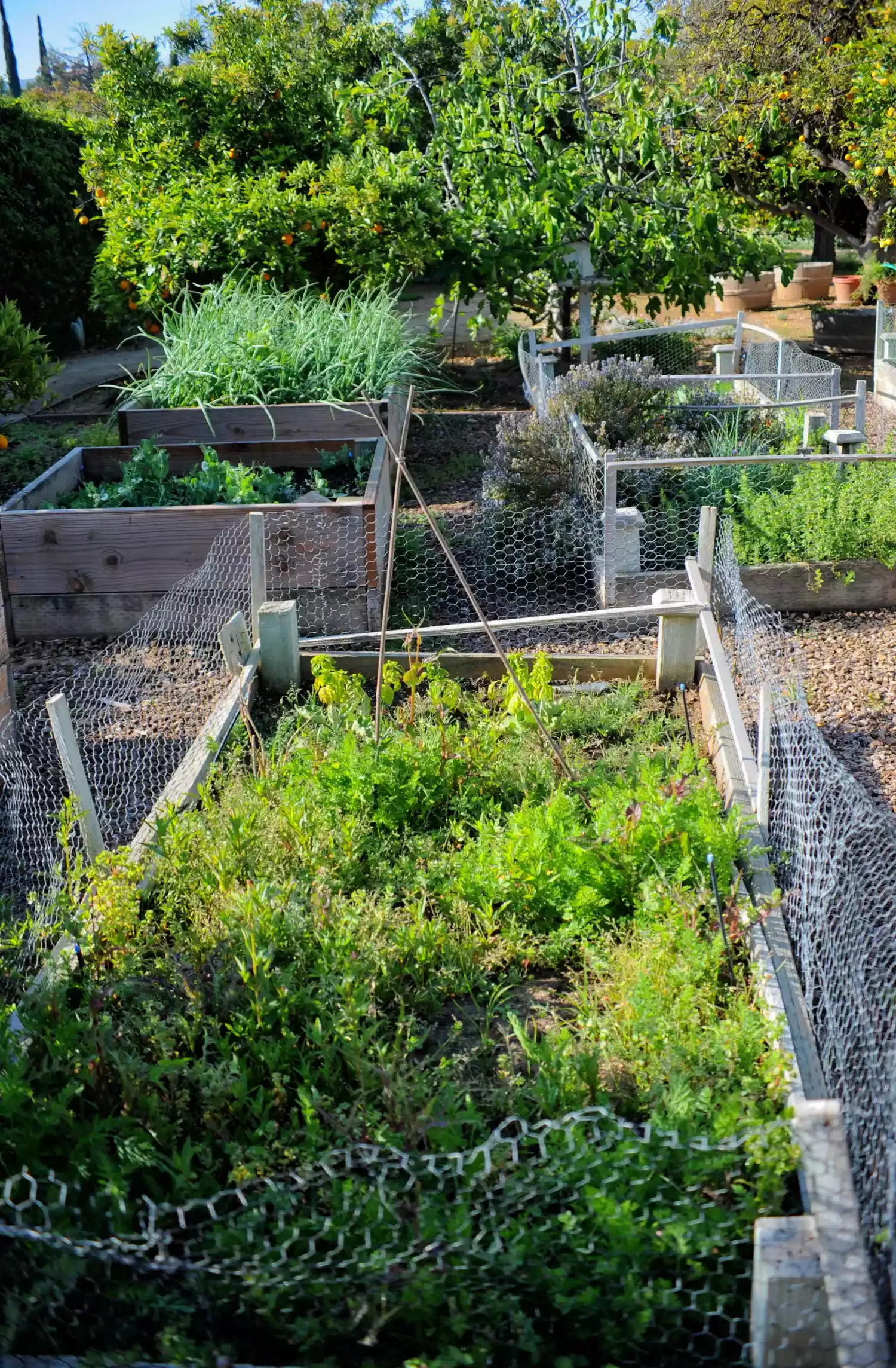
Credit: Kathryn Donohew Photography / Getty Images
You’ll protect your herbs from ground pests while adding structured visual appeal by planting in raised garden beds with optional chicken wire.
These elevated growing spaces keep herbs safe from critters like rabbits and deer while making harvesting easier and creating organized, attractive garden layouts.
30. Plant Companion Herbs That Thrive Together
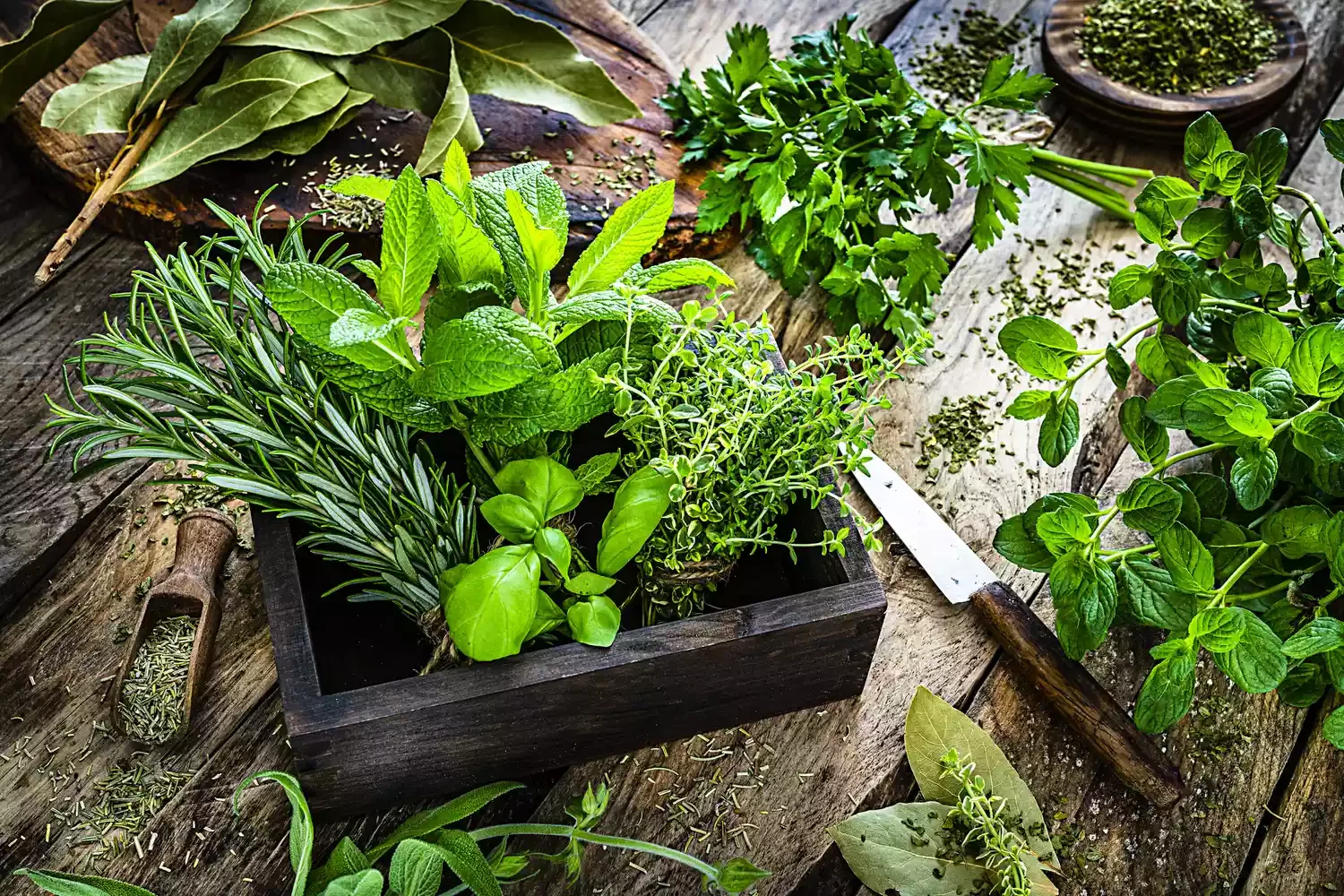
Credit: fcafotodigital / Getty Images
You can ensure healthy, thriving herbs by planting companion varieties known to grow well together in shared garden spaces.
Popular successful pairings include basil with oregano or parsley, chives with dill, mint with oregano, and parsley with thyme for mutually beneficial growing conditions.
31. Hang Culinary Herbs Above Your Dining Area
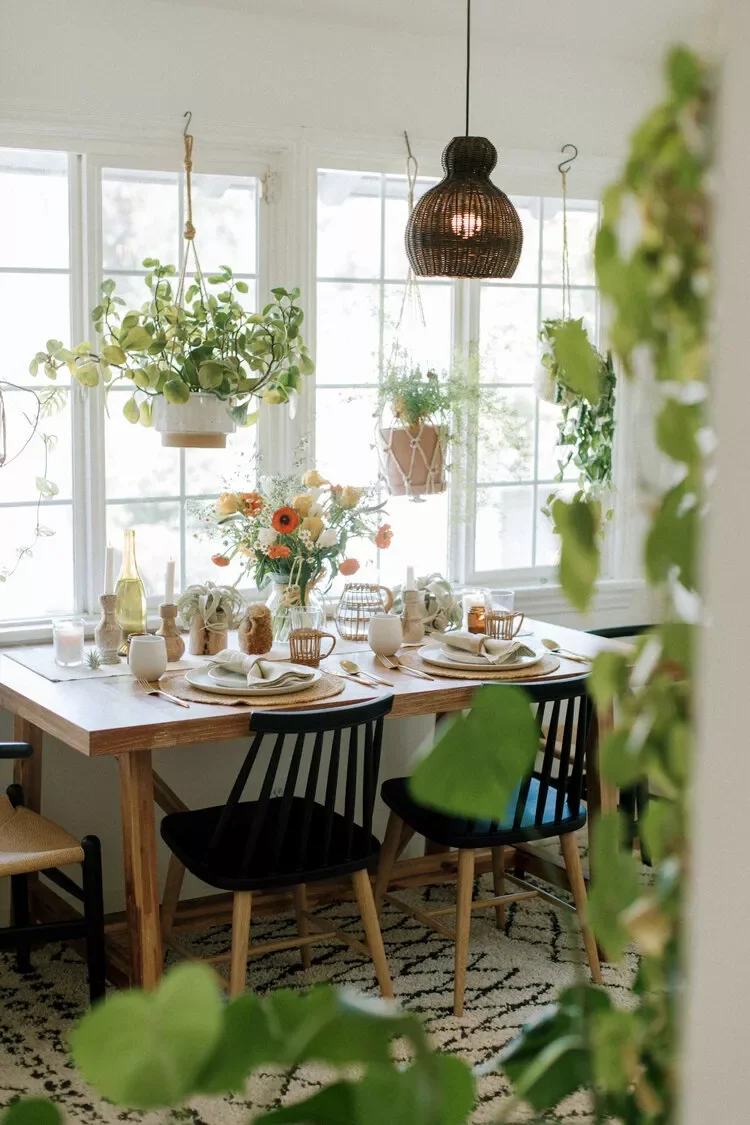
Credit: Sara Tafouli
You can keep garnishing herbs within easy reach by growing them in hanging baskets suspended above your dining table or kitchen area.
This approach puts fresh herbs at your fingertips while adding living decor to your ceiling space, especially beautiful in sunny windows or dining rooms.
32. Allow Proper Air Circulation Between Plants
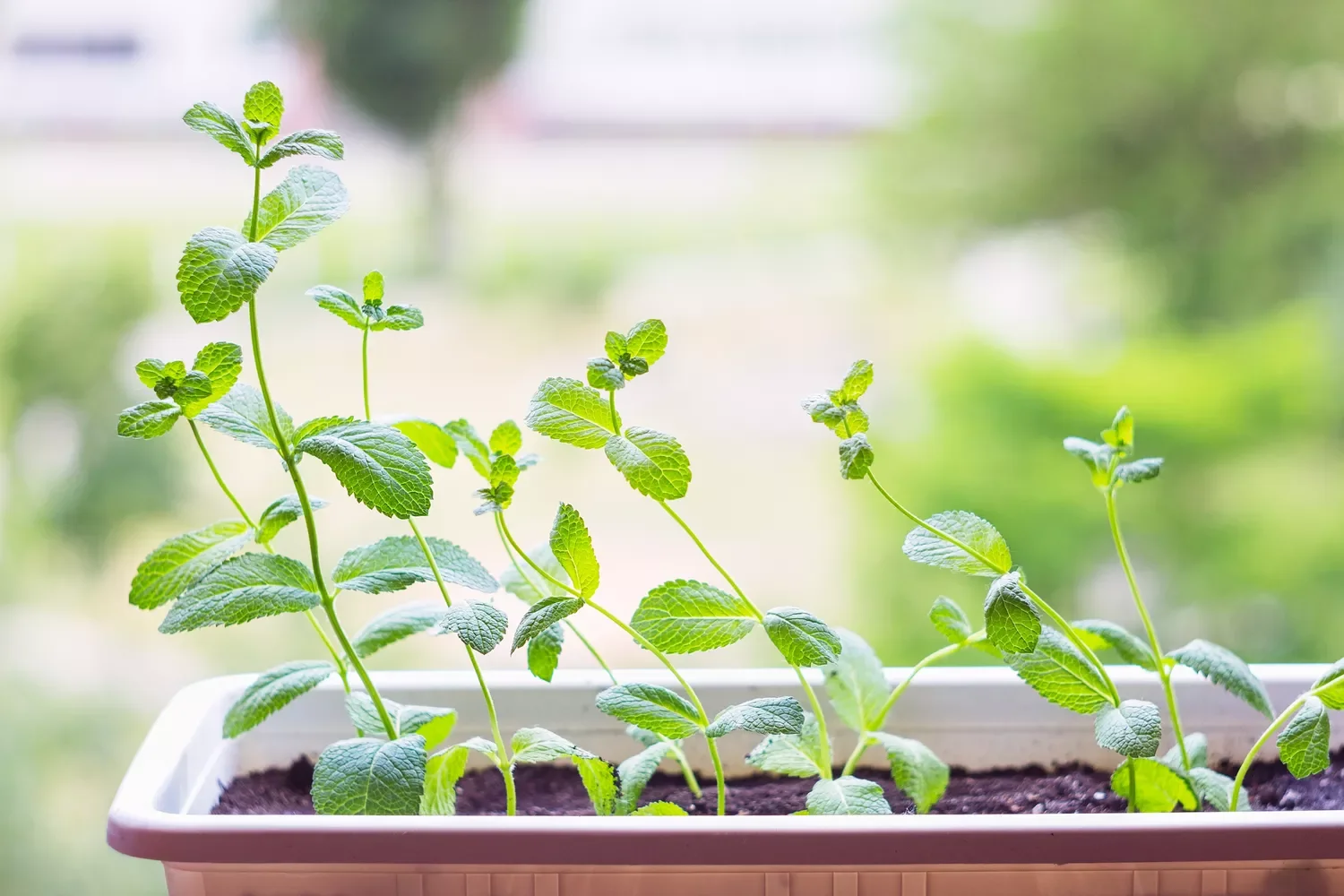
Credit: TorriPhoto / Getty Images
You’ll prevent pest problems and promote healthy growth by resisting the urge to crowd herbs too closely together in your garden beds.
Proper spacing allows adequate air circulation around each plant while reducing the risk of pests that often hitchhike on garden starts from nurseries.
33. Use Hanging Baskets to Keep Plants Away from Pets
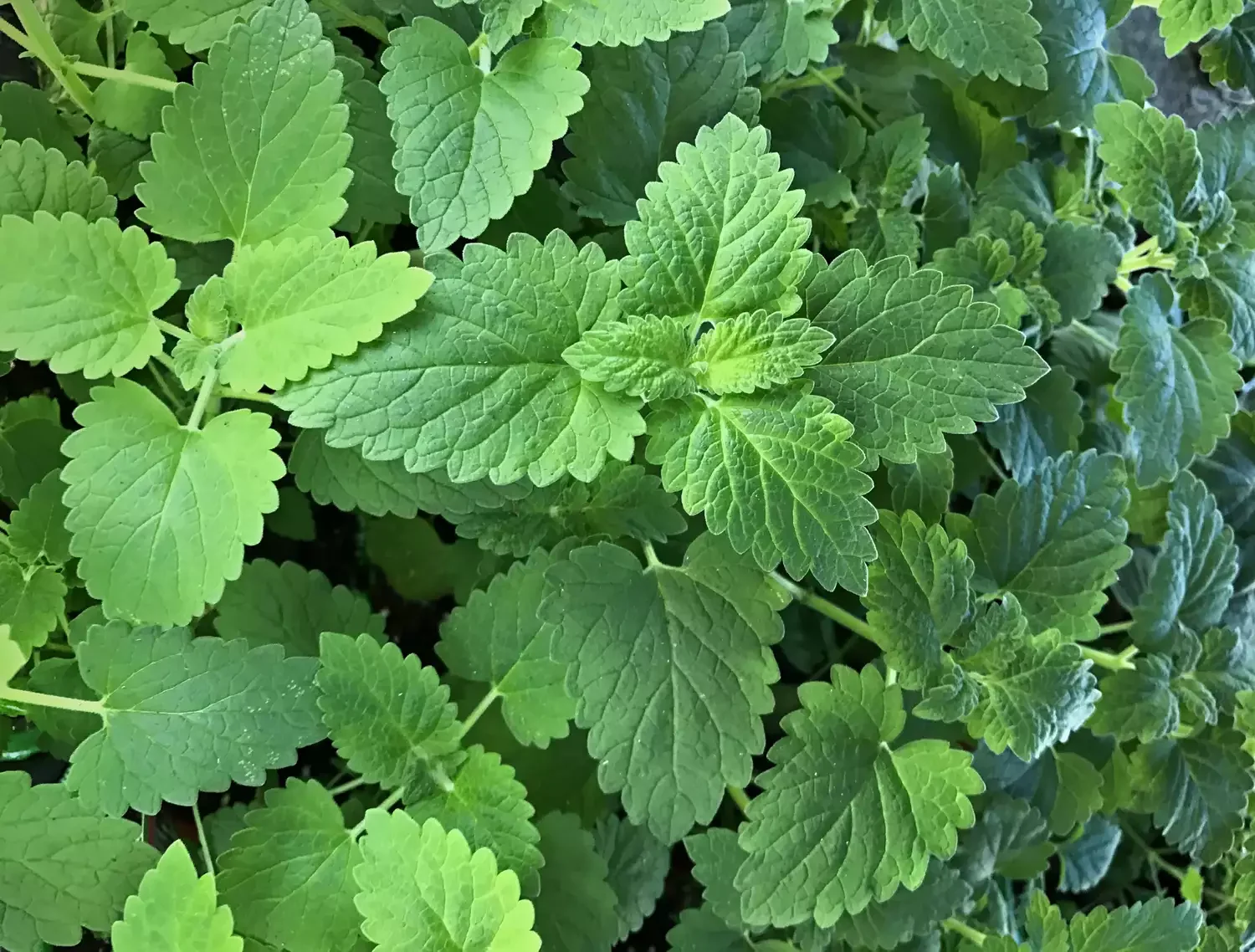
Credit: Zen Rial / Getty Images
You can protect both your pets and certain herbs by utilizing vertical growing space to keep potentially toxic or tempting plants safely elevated.
Hanging baskets work perfectly for herbs like catnip that might be too appealing to curious pets while maximizing your available growing space efficiently.
34. Design a Formal Herb Garden for Large Spaces
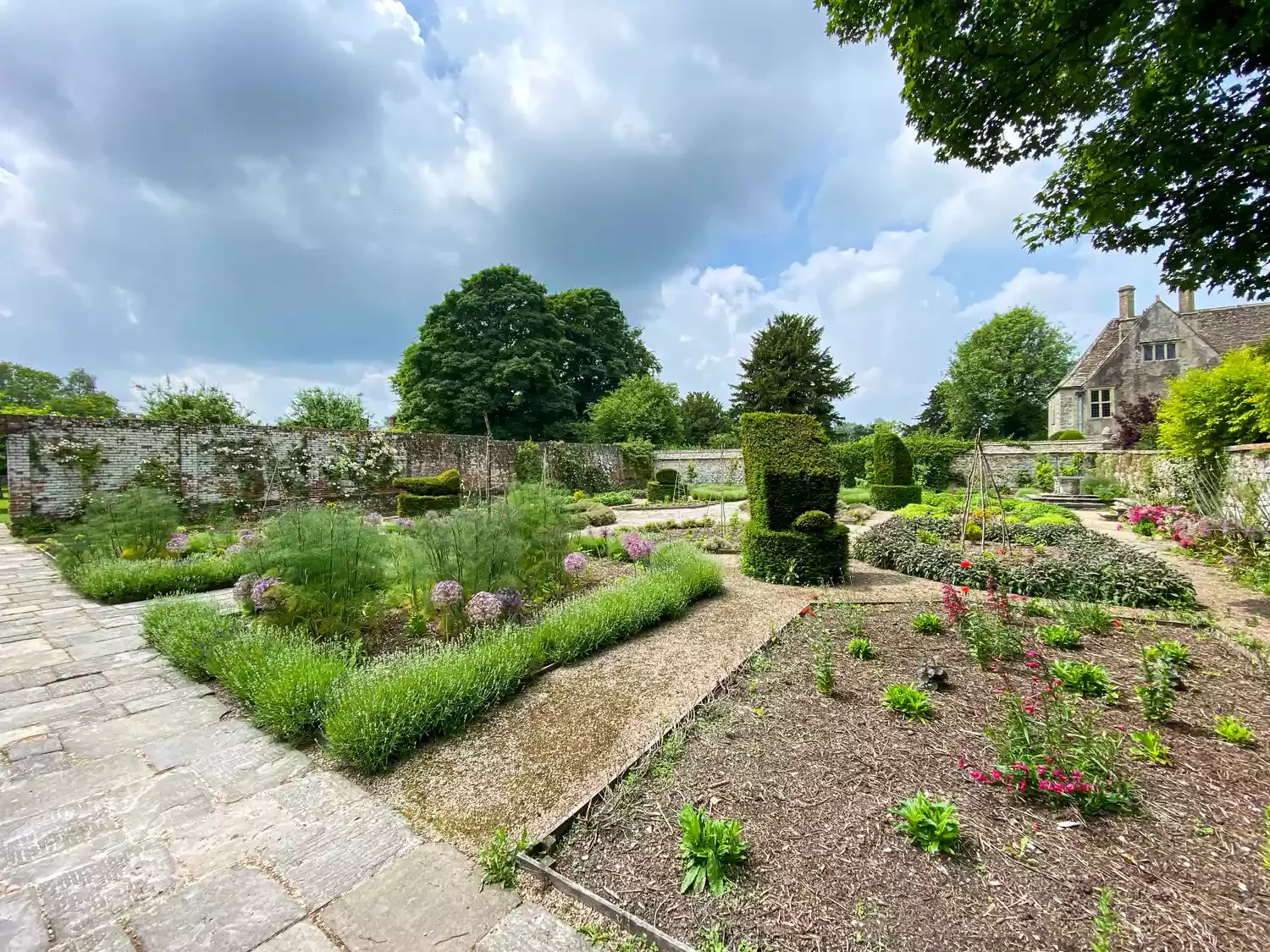
Credit: clubfoto / Getty Images
You can create an impressive focal point by designing a formal herb garden that combines decorative landscaping principles with practical growing benefits.
With proper planning, you’ll have everything from bee balm and cilantro to tarragon and chamomile thriving together in one stunning, organized display.
35. Select Herbs with Beautiful Colorful Blooms
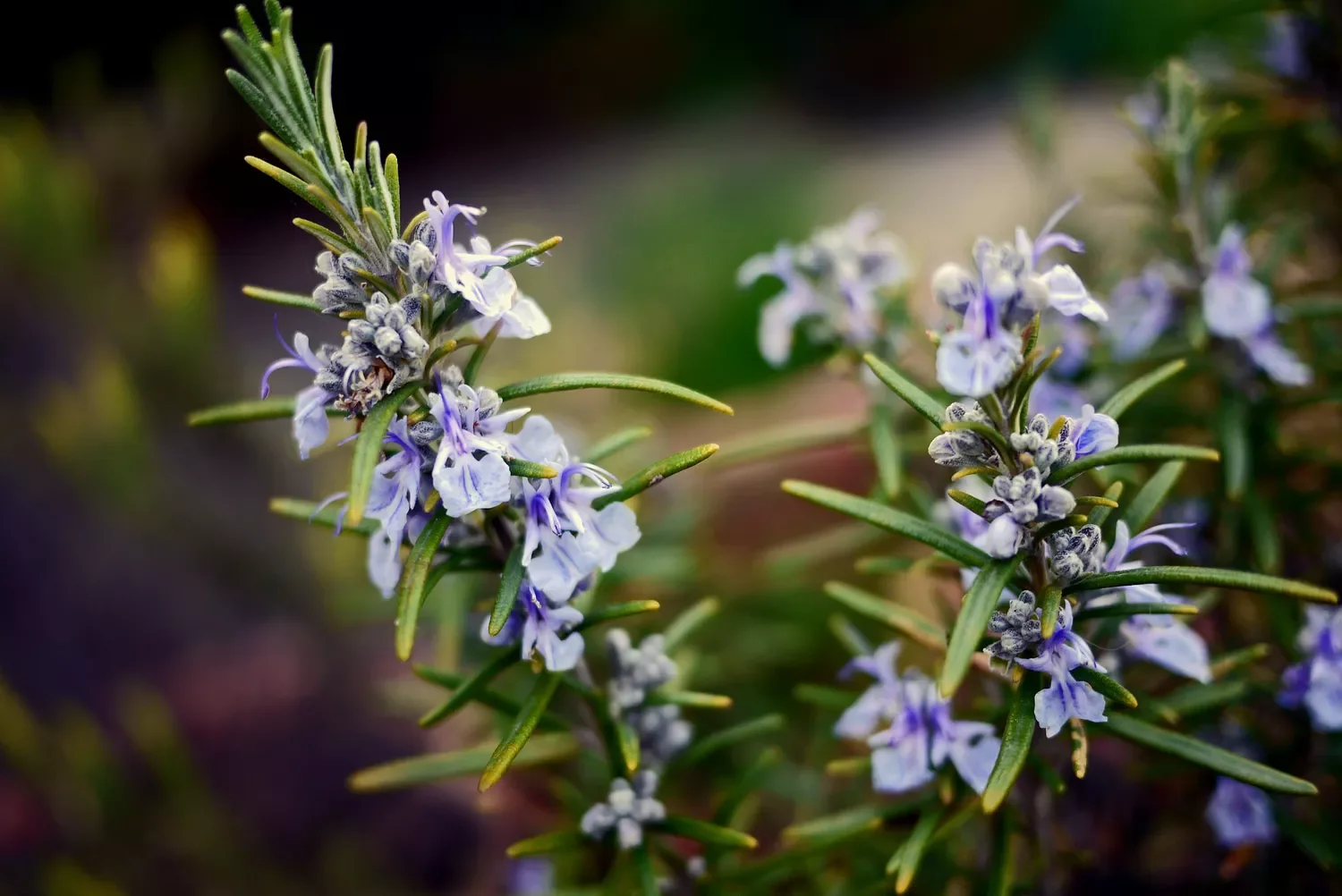
Credit: Rosmarie Wirz / Getty Images
You can enjoy both culinary and ornamental benefits by choosing herbs that produce attractive flowers in eye-catching purple and pink shades.
Lavender, sage, rosemary, bee balm, dill, Thai basil, and spearmint all offer gorgeous blooms while providing fresh herbs for your kitchen endeavors.
36. Control Spreading Herbs with Concrete Pavers
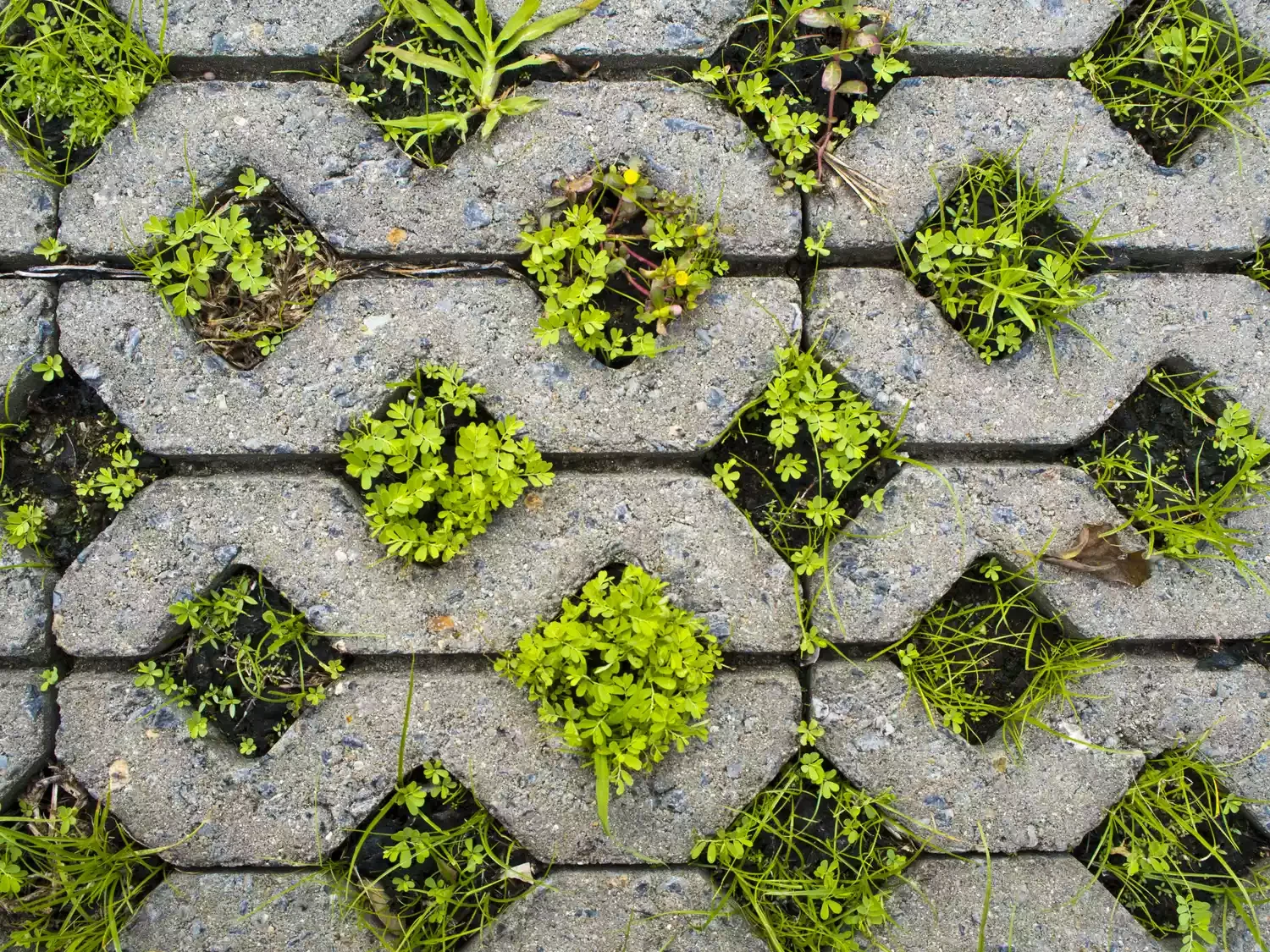
Credit: Satakorn Sukontakajonkul / EyeEm / Getty Images
You can prevent aggressive herbs like mint from overtaking your entire garden by using concrete pavers to create natural growing boundaries.
This clever design solution creates attractive patio spaces while containing fast-spreading varieties within the structured grid pattern of your paver layout.
37. Use Self-Watering Containers for High-Maintenance Herbs
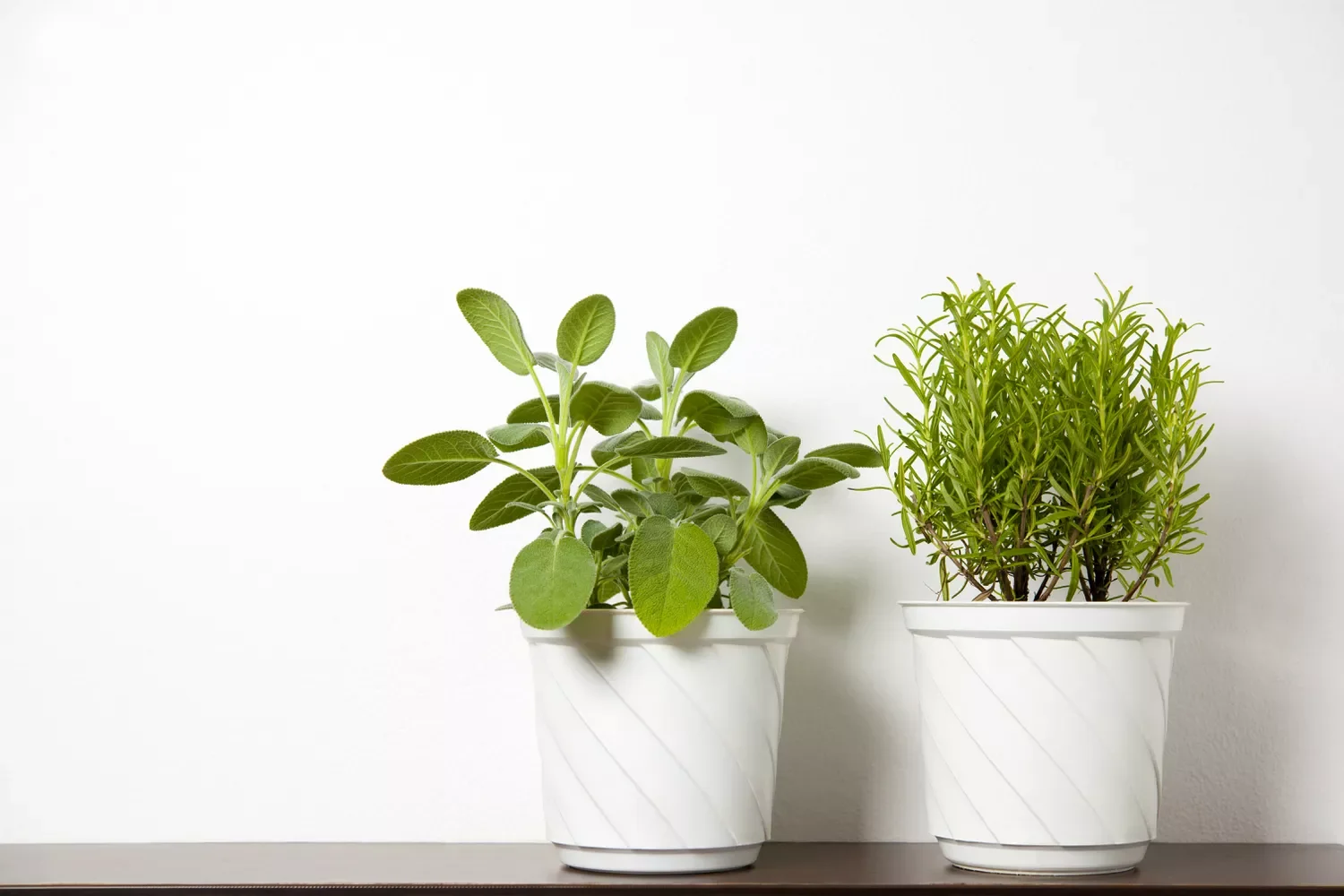
Credit: stock_colors / Getty Images
You’ll keep water-loving herbs like chives, parsley, marjoram, and mint perfectly hydrated using self-watering containers that maintain consistent moisture levels.
These convenient systems ensure your thirsty herbs stay healthy even when you travel, providing steady hydration throughout the day without constant attention.
Final Thoughts
Creating your perfect herb garden doesn’t require extensive space or gardening expertise – just creativity and the willingness to start small.
Whether you choose a simple windowsill setup or an elaborate outdoor design, you’ll soon discover the joy of cooking with fresh herbs you’ve grown yourself.
Start with one or two of these ideas that appeal to you most, and gradually expand your herb garden as your confidence and enthusiasm grow.